

Lexington’s Path to Shared Purpose.
A New Agenda for Education and the Community
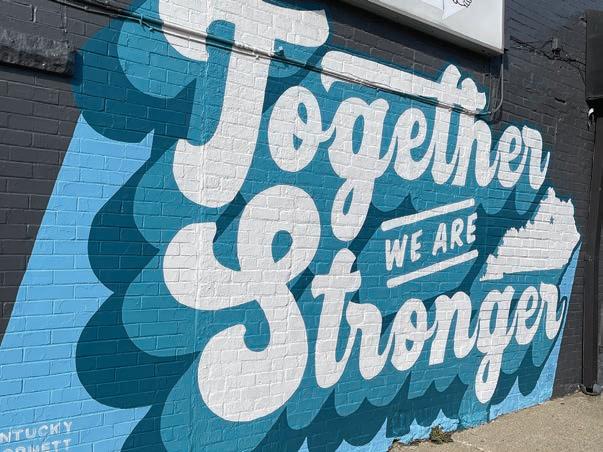

PREPARED BY THE HARWOOD INSTITUTE FOR PUBLIC INNOVATION IN PARTNERSHIP WITH UNITED WAY OF THE BLUEGRASS WRITTEN BY RICHARD C. HARWOOD

The Harwood Institute for Public Innovation 4915 St. Elmo Avenue, Suite 402 Bethesda, MD 20814
phone 301-656-3669
fax 301-656-0533
email info@theharwoodinstitute.org web theharwoodinstitute.org
The Harwood Institute for Public Innovation is a nonprofit, nonpartisan organization that equips people, organizations, communities, and networks with the tools to bridge divides, build capacity, and tackle shared challenges. The Harwood Institute’s work is rooted in a philosophy of Civic Faith and the practice of Turning Outward. Founded in 1988, the Institute’s approach has spread to all 50 states across the U.S. and 40 countries around the world.
United Way of the Bluegrass 651 Perimeter Drive, Suite 510 Lexington, KY 40517
phone 859-233-4460
fax 8 59-259-3397
email L iveUnited@uwbg.org web u wbg.org
United Way of the Bluegrass, located in Lexington, KY is a 501c3 nonprofit organization. For 100 years, United Way of the Bluegrass has been fighting for the basic needs, education and financial stability of every person in Central Kentucky. By forging impactful partnerships to help create long-term solutions and change, we bring people and resources together to Live United for a better, stronger Bluegrass. UWBG programs impact people living in Anderson, Bourbon, Clark, Fayette, Franklin, Jessamine, Madison, Montgomery, Scott, and Woodford counties.
Lexington’s Path to Shared Purpose: A New Agenda for Education and the Community was prepared by The Harwood Institute for Public Innovation in partnership with United Way of the Bluegrass.
We are grateful for the financial support from the Walton Family Foundation that made this report possible.
Written by Richard C. Harwood
Edited by Jed Miller and John Conroy
Research by Laine Bourassa, John Conroy, Marla Crockett, Ava Fenelus, Cheryl Green, Andrew Taylor, and Lydia Thacker
Assisted by Gary Cremeans, Jen Dalton, Justin Handshoe, Jonathan Kohn, and Monique Mosley
Design by Dresden Branding & Design
Photography by CivicLex, JAG KY, North Limestone Community Development Corporation, and United Way of the Bluegrass
©2022 The Harwood Institute for Public Innovation
No part of this report may be reproduced in any form or by electronic or mechanical means, including storage and retrieval systems, without written permission from the copyright owners.

Letter from United Way of the Bluegrass
Dear Lexington Family,
United Way of the Bluegrass fights every day for every person in our Bluegrass community. Together, we work hard to ensure that more people have the tools and support they need to thrive and succeed. We fight for the education, basic needs, and financial stability of every person, in every Central Kentucky community that we serve. United, we fight for a better, stronger Bluegrass.
Our mission drives everything we do at United Way, and The Harwood Institute for Public Innovation shares our belief that everyone deserves opportunity and access to the resources they need to support their journey toward stability and success. We believe that your zip code should never dictate your path and success in life, and that is why we fight for equitable access and opportunity.
We are proud to partner with The Harwood Institute for Public Innovation to create a community-driven agenda on education and to strengthen our community’s capacity to take effective action on that agenda. The Harwood
Institute for Public Innovation is a nonpartisan, independent nonprofit that equips people, organizations, communities, and networks with the tools to bridge divides, forge a culture of shared responsibility, build local capacity, and tackle shared challenges. As my friend Rich Harwood says, “Our society must build a more equitable, just, fair, inclusive, and hopeful path forward.” Together, we will strive to help more people in the Lexington area find a path forward.
We hope that you will read and reflect on the report that follows. Most importantly, we hope that we can Unite to take collective action to equip all young people with the opportunity to thrive. Let’s Live United for a better, more equitable Bluegrass.
In partnership,

Timothy Johnson President & Chief Executive Officer United Way of the Bluegrass
Preface
Lexington is at a critical juncture.
In this report, you will hear residents and leaders describe their community with great pride. They identify an abundance of programs, organizations, and leaders working within Lexington. They celebrate the community’s growth.
Yet many people feel left out or left behind. An instinct to coordinate efforts often masks the need to engage in harder conversations about purpose, relationships, and impact. Asking hard questions is seen as making waves and is frowned upon. The community is trying to make its way forward, but how? Toward what end?
My own experience is that communities move forward when enough people intentionally choose to step forward, turn outward toward one another, and set in motion meaningful actions that spread throughout a community like a positive contagion. They pay close attention, not only to developing new initiatives and programs but also to the civic strength and culture of their community.
We live in a time when people are looking for a more equitable, fair, just, inclusive, and hopeful path forward. They want to believe that we can get
things done together. They feel a special urgency today when it comes to the education of young people.
In Lexington, taking this path requires overcoming a variety of hurdles that keep people apart or leave them feeling left out or left behind. More room must be made for people to exercise their voices, even their frustrations. Efforts to strengthen education must be rooted in a focus on purpose and impact, not simply on more programs and better coordination. Education must be seen not solely as the responsibility of local schools, but of the entire community, and the people of Lexington must decide that all children—not just their own—deserve opportunity.
Among communities in the United States, Lexington is enormously fortunate to be rich in assets. The question for Lexington moving forward is: Will it create a shared purpose where each individual can fulfill their potential and no one is left behind?

Richard C. Harwood President and Founder
A Guide to this Report
In early 2021, United Way of the Bluegrass and The Harwood Institute for Public Innovation forged an important partnership to engage the Lexington community in creating a communitydriven education agenda that would ensure every student has access to the American Dream. It would also strengthen the civic culture of Lexington to take effective, sustainable action. This effort is part of a national initiative supported by the Walton Family Foundation.
Over nine months The Harwood Institute, with the support of United Way, undertook a series of conversations with community residents from twelve different neighborhoods across Fayette
County. Each conversation was held with cross-sections of approximately ten people. There were four additional conversations to delve deeper into issues that were surfacing from the initial conversations; one each was conducted with high school students, another with teachers, another with grassroots leaders, and one with participants from the earlier conversations.
In addition, The Harwood Institute conducted thirty-six in-depth interviews with community leaders, which included elected officials and leaders from Fayette County Public Schools, nonprofits, religious institutions, businesses, and other areas.
Here are the sections of the report that follow:
Introduction
This section provides an overview of the report.
Our Voices
In this section, you will hear people in Lexington describe how they see and experience the community and share their hopes and concerns about the future.
Lexington’s Education Agenda
This section provides a six-point education agenda to bring about a more equitable, inclusive, and hopeful path forward for all of Lexington’s young people and families.
Lexington’s Public Capital
This section is a snapshot and analysis of the fundamental structures, networks, and norms of Lexington through the lens of The Harwood Institute’s Public Capital Framework. The snapshot reflects what it takes for a community to work together effectively to achieve its goals; the framework was developed through the Institute’s research and on-the-ground work in communities in all fifty U.S. states.
Moving Forward, Together
This section lays out a shared path forward for Lexington to achieve its education agenda and strengthen the community.

Introduction
Lexington was recently named by U.S. News and World Report as one of the 50 best places to live in the United States. Listen to the voices of people in this report, and their affection for Lexington and Fayette County comes through loud and clear. The community is growing. Lexington is on the move.
But where is it moving? Will everyone in the community be included, or might some people be left behind, even left out? And will the community effectively marshal its collective resources to keep progressing?
Where the Community Stands
Lexington’s growth has come fast and brought with it many benefits. New energy abounds, job opportunities have expanded, the community has become a hub for arts and culture, all while maintaining a small-town, neighborly feel. There is an abundance of programs, organizations, and leaders working to strengthen the community. Compared to many places in the U.S., Lexington is blessed with financial resources. Civic pride is strong.
The community is not without its challenges. In this report, you can hear residents, leaders, educators, and students calling for a new agenda for education and the community, one that ensures that every young person can fulfill their potential.
Real progress on this agenda will take shared community action. Let’s be clear: this is not a report card on the Fayette County Public Schools (FCPS). It is a report about the community, of which FCPS is a part. Ensuring all young people can succeed is a community responsibility working in partnership with the public schools.
Moving forward effectively requires squaring up with reality. As one leader suggested, those with “rose-colored glasses” regarding the community and its challenges must take them off. Without a doubt, Lexington is cherished by the people who make it their home; yet, not everyone feels as welcomed as others, not all actions are creating the intended changes, and not all change is focused on the people who need it most. Our interviews with residents, leaders, educators, and students reveal four overarching themes that need the community’s urgent attention and action:
Many people feel their voices do not matter. Educating young people is one of the most basic functions of a community. How people see education and their kids is often a mirror for how they see themselves and their connection to the community. Without these strong connections, people’s engagement in community efforts diminishes, public will for change recedes, and people lose hope. Today, too many people in Lexington do not believe their voices matter or that they are part of the community’s decision-making. Action is lacking on the things people say are important to them.
The community faces real hurdles. Especially when it comes to education, the community must face and overcome a collection of hurdles: too many opportunities for young people are dictated by their zip codes, many people in the
community seem unaware of each other’s realities, community efforts are fractured, divisions based on race and income persist, and some parents are concerned only about their own child’s education. For now, these hurdles shape people’s lives and the community’s future.
More coordination is not the answer. Strong norms are driving how people in Lexington tackle challenges and how they interact. There is an embedded reflex— perhaps a deep belief—that change will come through better coordination of efforts; this instinct is especially apparent with concerns related to education. But when it comes to real action, coordination is not the same as collaboration—or integration— because people can coordinate without actually having to work through tough issues together. That work is often missing in Lexington.

Lexington must move beyond its comfort zone. Moving forward will require residents, organizations, leaders, and others to go beyond what they already know and do. For some, this will mean dealing with the discomfort—and perhaps the dissonance—that always comes with progress and change. For others, it will mean working through their resistance to change and learning how they can be a part of an evolving community while carrying forward many of the cherished parts of Lexington.
Calibrating Change
Lexington is at a critical juncture. It has experienced significant growth; at the same time, it faces real challenges. In some respects, the community is on the move while still often feeling stuck. Both things happen to be true.
In The Harwood Institute framework
Community Rhythms: The Five Stages of Community Life, every community is in one of the five stages, and each stage has fundamentally different implications for where a community is and how it can move forward. Lexington is in the “Growth” stage.
In Growth, people can see and identify clear signs of how the community is moving forward. They can name leadership at all levels and where such leadership is expanding and deepening–
At the heart of this action is the need for Lexington to find new ways to work together.
from the official level to neighborhoods, within both civic organizations and nonprofits. Networks are growing, and a sense of purpose and direction are taking deep root. People feel a spirit of community. More people are working together and efforts are happening across the community. In this stage, a common story has emerged about the community. But for a community in Growth, underlying issues can still get ignored, systemic challenges can grow, people can feel left out and left behind, and the community’s dominant narrative may not be the whole story.
In fact, a community can fall into what we call “The Waiting Place” in the Growth stage—where progress stalls even though there may be lots of activity, programs, and initiatives. The response is often to push even harder, do more projects, raise more funds, and announce new efforts. But toward what end? Where is the community heading?
This is where Lexington finds itself.
Moving Forward, Together
The education agenda presented in this report is from the community, and is about the community. It calls for action in six areas that will increase the likelihood that every young person has the opportunity to fulfill their potential. The agenda will also help Lexington propel itself out of its current waiting place. The agenda is not a panacea, but a path forward. It calls for action by both community members and FCPS.
At the heart of this action is the need for Lexington to find new ways to work together—creating new norms for
interaction, making the community’s conversations more inclusive of all people, moving from coordination to collaboration, and generating a renewed sense of shared purpose.
Each and all of these new ways of working will require people to turn outward toward one another and to make the community their reference point for their conversations and actions. This is a different mindset; it puts people at the center of all that we do. Without this essential step, new ways of working together will be difficult to achieve.
The actions Lexington takes next regarding education are critical; how Lexington does the work is just as important.
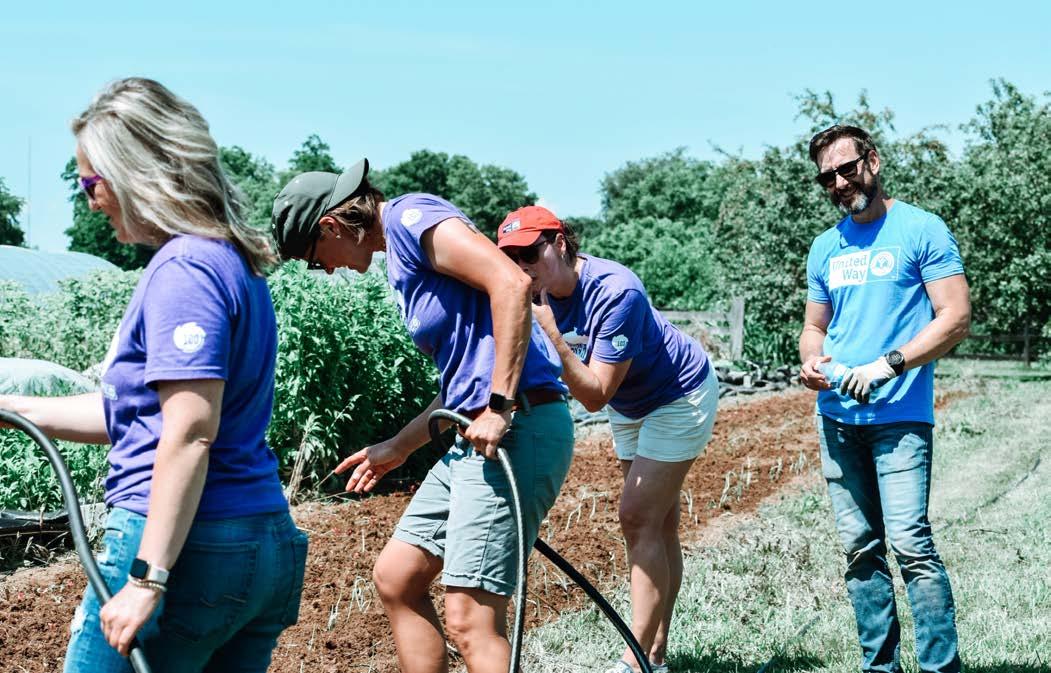
Our Voices
Lexington and Fayette County have an abundance of assets and resources.
Yet, there are real challenges when it comes to the community and education, and these require urgent attention and action. The voices of the community— from residents to students and from teachers to leaders—reveal significant hurdles that need to be overcome now for the community to flourish in the years ahead.
Small Town Spirit
Lexington is known as a big small-town. People from all walks of life say there is a place for them here and that it is a place they want to be. Some cherish the smalltown feel of the local neighborhoods and personal connections. Many residents said that in Lexington you’re always bound to bump into someone you know. Others love the community for its storied history and its place in
their personal histories. A community leader remarked that Lexington is where “big city meets small-town” and another noted that it “lands in the sweet spot” between smaller towns and larger towns.
During emergencies like the global pandemic, or amid the more long-term challenges of economic hardship, many people think of Lexington as a place where, as one resident said, “neighbors help neighbors.” Another resident talked about how people checked in on each other during a multi-day power loss. “There are a lot of ways that people, whether they grew up here or not, invest in their neighbors. The amount of community support is strong.” Another described how an elderly woman in the Cardinal Valley built and painted a pantry box that sits outside her home, where anyone can put food or other necessities, and anyone in need can help themselves.
“There are a lot of ways that people, whether they grew up here or not, invest in their neighbors. The amount of community support is strong.”

People spoke repeatedly about the physical beauty of the community and said it was a good place to live and to raise their children. One resident said, “Lexington is a beautiful, amazing place in the sense of safety, where you would want to raise a family.” A parent of four added, “Lexington’s a great place to live. There are beautiful places to go, especially outdoors.”
“Mind-Blowing” Potential
People consistently referred to the potential of Lexington. One grassroots leader called the community’s potential “mind-blowing.” Another said, “There’s tons of potential here. We just need to
get the right people in the right places to do the right things because they want to do the right things. They have the ideas.”
Many of “the right things’’ are in place already. People talked about sound and growing efforts throughout the community to address Lexington’s challenges and to help fulfill its potential. There is an abundance of organizations, groups, leaders, and residents involved in making a difference. Institutions such as United Way of the Bluegrass, the Blue Grass Community Foundation, and the Prichard Committee for Academic Excellence are recognized by leaders and residents alike for their efforts to make a difference. Smaller or newer groups
“There’s tons of potential here. We just need to get the right people in the right places to do the right things because they want to do the right things.”
like Black Males Working Academy, CivicLex, El Centro de San Juan Diego, Rafiki Center, and the Common Good after-school program, among others, are known for their good works. A Lexington teacher expressed optimism about the future of education in the community:
“There is intentionality with individuals and groups to try to catapult us forward compared to where we have been.” And parents, families, and local businesses are working with some of the more effective school-based decision-making councils, PTAs, and mentoring programs.
The University of Kentucky (UK) is viewed as a huge asset and a positive influence on Lexington and the surrounding area, serving as an engine of education and innovation, a place for local people to gather, and a home for their beloved UK teams. Many people also praised the former Fayette County Public Schools superintendent Dr. Manny Caulk, who unexpectedly passed away in 2020. Certainly, not everyone was an avid supporter, but most of the people who mentioned Dr. Caulk lauded his vision, dedication, and strategic implementation of priorities in education. While Dr. Caulk is missed, people now hold great hope for the new superintendent, Dr. Demetrius Liggins. Many said people in the county take pride in the fact that the two most recent FCPS superintendents were Black.
“I don’t think it’s a coincidence that the previous superintendent was a person of color and the new superintendent is a
person of color. It reflects our changing dynamic in the future,” a community leader said.
Another community asset that was highlighted in our conversations was people. A grassroots leader echoed the sentiments of individuals across these discussions. “The people are the city’s greatest resource because that’s where community comes from,” they said. “That’s where ideas come from. That’s where change comes from. It starts with the people and their voices. That’s our city’s greatest resource, our people.”
“That’s our city’s greatest resource, our people.”
Pressure, Pressure, Pressure
The beauty and the potential of Lexington quickly– abruptly –bump up against the various challenges that face the community today. These pressures were raised in nearly every conversation. One community leader described Lexington as “starting to experience the growing pains of its new urban future.” Another explained, “I am a native Lexingtonian. I was here in the 1950s when we were a relatively small agrarianbased community. Now, 60 years later, we’re 350,000 people. We have become
a center for health care, for education, for the entire commonwealth. We remain the hub and retail outlet for all of southcentral and eastern Kentucky.” A resident who recently moved back to town said, “I’ve been telling people an extra 250,000 people moved in while I was gone!”
With this growth have come changes in demographics, culture, economic stability, and public safety. Lexington’s growth has affected “everything from housing, apartments, and homes, to business structures and hospitals,” one community leader told us. “All of those structures and institutions have had to grow and adapt.” Some have adapted better than others. Rising costs are now placing intense pressure on people’s ability to find affordable places to live. “You have to find places to put people,” a resident pointed out. Many people expressed deep concerns about the “gentrification” of the city and its impact on displacement and evictions.
Residents reported that population increases have led to increases in crime and gun violence, making Lexington “not a safe environment anymore” and a place where “it’s getting dangerous.” Particular concern was raised about safety for Lexington’s youth. Here’s how one high school student explained the situation: “I live out East End. Two weeks ago, this dude got shot on my street. Plus, there are so many junkies, prostitutes. It’s not safe around here.”
The issues of crime and safety were on everyone’s mind, in every neighborhood.
Some people in these conversations talked about these pressures in terms of the limits of Lexington’s “small-town mentality,” where “a lot of people care deeply” but they “don’t want to venture out of their comfort zone” geographically, socially, or politically. One faith leader said that more people have “got to come out of their comfort zones” if the community is to address its challenges. Indeed, a theme we heard in many of these conversations—and one that is found throughout this report—is that many people are not in touch with other parts of the community or with the challenges that others confront. And yet the changes in Lexington are putting more pressure on people to see and hear one another, especially to see those who may be different from them, or who live in different areas.
At the heart of Lexington’s changes is a community “grappling with its identity,” one resident said, “choosing which way we want to go.”
Critical Hurdles
As Lexington grows, and the pressures it faces mount, the community has several hurdles it must address to move forward and reach its potential. Many of these are not new; nor can they be ignored. They are real.
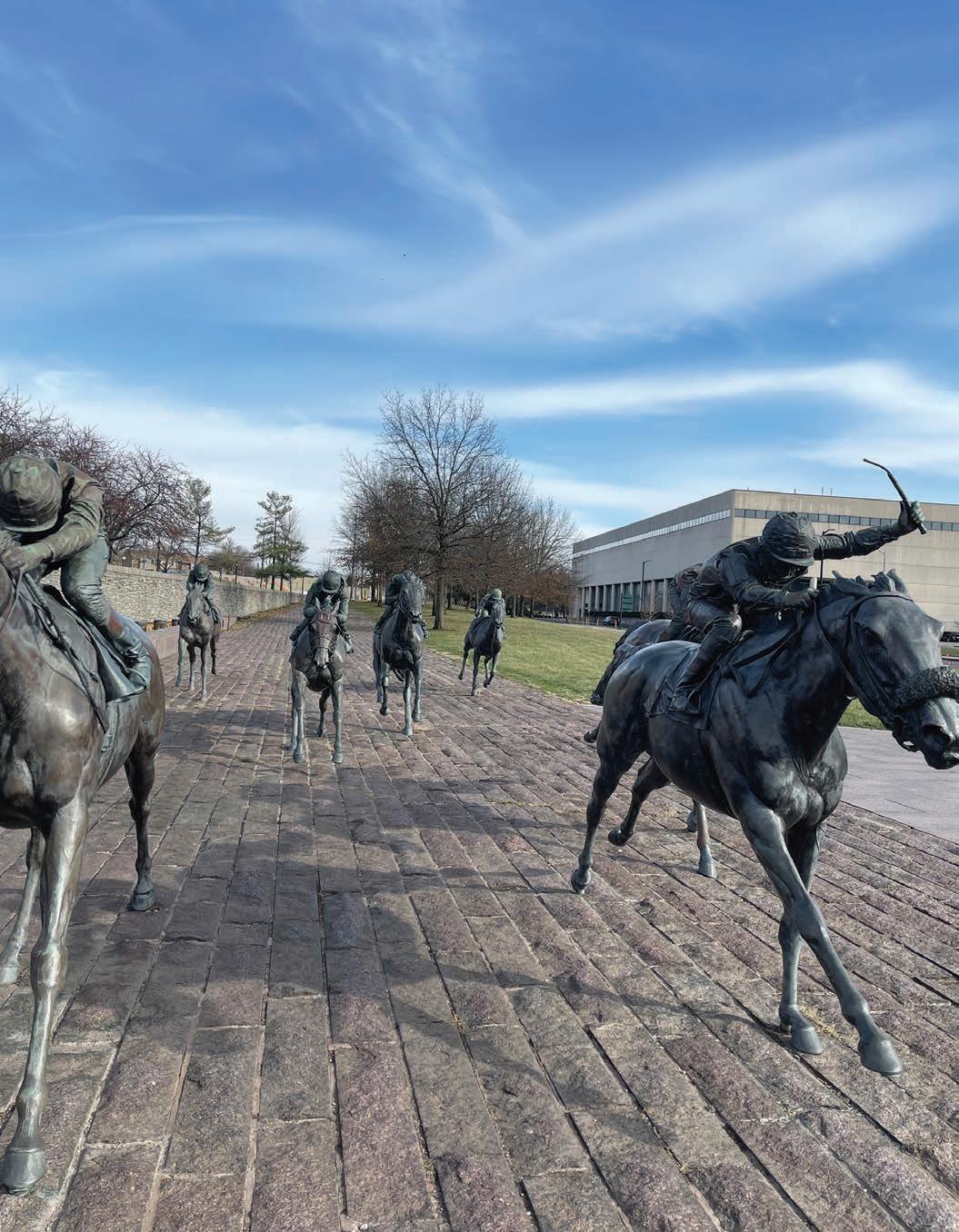
“On paper, there is a lot of diversity in Lexington, especially compared to most of the rest of the state. But it is still very segregated.”
ZIP CODES DETERMINE OPPORTUNITY
Many people used the word “segregated” to describe both the geography of Lexington and the range of opportunities available. “On paper, there is a lot of diversity in Lexington,” a resident said, “especially compared to most of the rest of the state. But it is still very segregated.” Turn a corner and “you might feel like you’re in a whole other city,” a community leader observed. Lexington is “still pretty divided by zip code,” another pointed out.
Across the conversations, there was a clear sense that some communities in Lexington are being left out and left behind while others are moving ahead. Here is how one community leader put it: “I just don’t think some people recognize or understand that there’s a pretty big population of folks that aren’t having their needs met.” Another told us, “Five minutes down the road, you go from a very populated area with lots of services, businesses, and outdoor things, to deserts–food deserts, store deserts.”
Though Lexington has seen growth and new opportunities, “those opportunities have not been extended equally,” in the words of another leader. “There’s always been a big division between the haves and the have-nots. And of course, that falls pretty heavily on racial lines.” A high school student explained, “Because you’re in a lower-income area, you’re not going to get the same opportunity as people that are in a middle-class or even higher area— just because of where you were born or the economic status that you were born into and you can’t help that. That’s a bad thing here in Lexington.”
These divisions by neighborhood and race are especially clear in the affordability of housing and the disparity of educational resources. A nonprofit leader said the “huge affordable housing crisis” has forced people to move to surrounding counties. “Ten years ago,
“As we grow bigger, the disparities get bigger.”

it was very easy to imagine affordable housing,” a resident said, “there were options on where you could move and still be a part of Lexington. I don’t see any of that now.” Another said, “It’d be really hard as just a single-income household with children to find a decent area with decent schools.” Finally, a community leader told us, “As we grow bigger, the disparities get bigger.”
The disparities between Lexington’s schools were also frequently mentioned. “You get a varied educational experience based on where you live,” a teacher said plainly. One mother explained it this way: “I’m baffled that I’ve got my daughter’s elementary school with buckets of resources, and we’ve got an elementary school five and a half miles away struggling to give one pencil to every kid that walks through the door.”
A FAILURE OF PEOPLE TO SEE EVERYONE
People in Lexington identify themselves largely by neighborhood: “‘Oh, I’m a Northsider; I’m a Chevy Chaser; I’m a Tates Creeker.’ Take your pick,” a community leader said. One upside, as a resident told us is that “there is a lot of neighborhood pride,” but they also said, “there is a disconnected perception of what goes on in certain neighborhoods.” Another resident pointed out, “People are not aware of one another’s reality.”
“People are not aware of one another’s reality.“
This situation doesn’t go unnoticed by Lexington’s young people. A high school student made the following observation: “Certain people, from certain areas, stay with each other and don’t really branch out. I feel that gives the leeway for just ignoring the problem of how things are across the different places where you live.”
A failure to see everyone can lead people to make the wrong assumptions about who others are and how they live. “When people know you’re from a certain area, they put you in a box,” a resident told us. “They think that says everything about you, and then they get to know you and they’re surprised to learn other things about you.” One education leader lamented, “No matter what we do, sadly there’s always going to be something that creates some level of segregation, whether that’s based on what we look like, how we identify, or our income and socioeconomic status.”
This can be a big barrier to bringing
people together to support the community as a whole. Another resident put it this way: “I think that everybody who lives here pretty much feels like they belong, but not everybody feels like everybody else belongs.”
NOT WORKING TOGETHER
In many places we heard frustration about how different organizations and groups don’t work together. There is concern that so many are doing their own thing and that so much potential is being lost. “This community is fractured,” is how one grassroots leader described Lexington. Another added, “To be honest, we’re quite a fractured city and those that aren’t in touch don’t know anything.”
While more resources may be needed in Lexington—and more equitable distribution of those resources—many people asserted Lexington already has significant resources that could be put
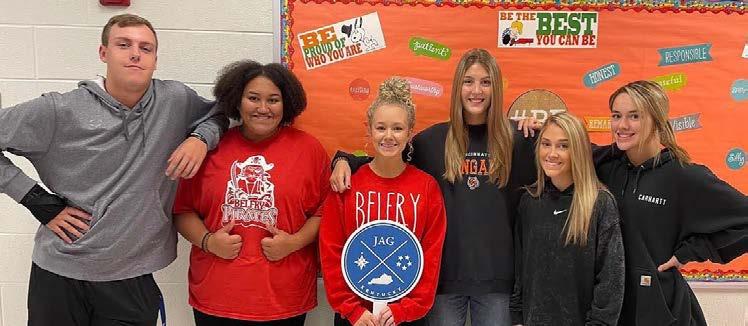
“Everyone is doing something, but nobody is doing anything together.”
to much better use. According to one resident, “There are lots of resources in Lexington. The problem that Lexington has is that everyone is doing something, but nobody is doing anything together.” The result, the resident says, is that “we’re not helping people in a completely holistic way.” Another resident lamented the duplication of effort: “Everybody is doing the same thing. So you’ve got to come together.” They added that competition for attention or resources can get in the way: “A lot of times we get caught up in being recognized, and then the job doesn’t get done.”
Over and over people talked about a desire to work together—a need to work together—but seeing resistance to actually doing so. Said one community leader, “Everybody likes their own little fiefdom. Everybody likes to be in charge of their own little kingdom. They’re going to play nice until you tread on their toes and on their turf.”
RACISM AND INCOME DIVIDES
The realities of racism and income differences were present throughout our conversations. These concerns were raised in different ways by different
people, but they were always a part of the discussion. At times they came up in personal stories and at other times through larger observations. A community leader shared a story of how the media covered the death of a White youth but failed to do so when a Black youth was killed: “Two kids lost their lives over spring break, one to violence from my kid’s school, and another one from Henry Clay school, who was skiing and hit a tree. Media coverage? The kid who lost his life on the slopes.”
Another community leader recounted recent school redistricting efforts. “There’s nothing more revealing about Lexington than to go and look at the newspapers and listen to the audio of when the district changes happened,” they said. “People who are known for education and loving everyone and saying, ‘everyone is welcome,’ were saying, ‘I don’t want my kids in that school with those kids.’ So the truth came out.”
Racism and bias insinuate themselves into everyday interactions and decisions— sometimes in how and what people are willing to see. A community leader observed, “People are not willing to
acknowledge racism as an issue.” A Black community leader said many people “de-prioritize” racial issues, and “if they care, it’s from a distance.” This reluctance to address—even acknowledge—race as an issue makes moving forward difficult. Another community leader added, “We are not on the same page about bias and how to address it.”
Many of Lexington’s challenges cut across both race and income. Neither issue seems to get the attention it requires; people told us that race in particular often is addressed tepidly, if at all. A resident noted that even well-intended folks who seek to reduce social divides find it easier to focus on the gap between “haves and have-nots,” because race “might be one of the hardest things to talk about.” Another leader said, “Lexington is still Kentucky. Even though you have some progress in areas, overall there’s polite racism that takes place and microaggressions.”
When we spoke with high school students, they underscored the challenges they see with both race and income-based divides. Some said they didn’t have first-hand experience with racism, but would then recall stories of friends who did experience it. However, many said they have faced prejudice along economic lines. According to one student, “The rich neighborhoods, or upper-class people, view people in the lower classes as bad and just sort of lump them together. They’re like, ‘Oh, there’s crime in that neighborhood. It’s bad.’”
“People are not willing to acknowledge racism as an issue.”
WHAT’S BEST FOR MY KID
When it comes to education “people are very myopic. They have blinders on,” said a community leader. They went on to describe the challenge of getting people past a reflex of thinking, “What’s best for me? What’s best for my kid? Don’t change this because my son’s benefiting from this. Don’t change it. I don’t care if it helps twenty other people.” This sense of caring only about “what’s best for my kid” was heard again and again. “Some people really feel that public education is supposed to serve just their child and their child’s needs. They don’t see that we are here to serve all, and it’s a huge barrier,” another person said.
An education leader told us they “see more apathy” among their fellow White residents because “they’re comfortable with the status quo.” One White parent said they feel “a sense of guilt,” seeing the disparity between White and Black families. They said they “want to be one of those parents who speaks up for the kids who don’t have as much and thinks about the community as a whole,” but that sometimes it can feel
“overwhelming to think about everyone. So you have a sense of like, ‘Well, at the very least I can make sure my kid is okay. And then maybe if I get her okay, then maybe I’ll think about a little bit bigger in my community.’”
Despite this difference in perspectives, many of those we spoke with shared frustration that Lexington is not creating a larger sense of community will around education. Many shared concerns that amid people’s focus on their own children, the community has lost sight of all children. A teacher said there is a need to “speak of the city at large” and to “uplift the entire city by having an engaged community.” Again, this will require a significant shift in Lexington.

“We live in a society in which I need to care about those children as much as I care about my own children,” said a community leader.
Overstretched Schools
People talked about Fayette County public schools with a combination of pride and frustration. Many expressed admiration for school programs and educators but wished it was easier to work with them. Some people who live in neighborhoods with more resources said they know schools in other neighborhoods are struggling. Families with fewer resources said they find the schools and school system less responsive, often inaccessible, and sometimes wholly inadequate. Meanwhile, teachers and administrators themselves feel incredibly stretched as they continue to do their usual day-today work amid the urgent challenges of Covid and accelerated efforts to address Lexington’s deep divides in educational opportunity.
“Some people really feel that public education is supposed to serve just their child and their child’s needs. They don’t see that we are here to serve all, and it’s a huge barrier.”
One community leader explained that when the public library system attempted to donate surplus books to the students who most needed them “they could not figure out how,” saying,“You would think our library system and our school district would work hand in hand. It was really difficult to get a hold of somebody who could navigate and accept the books.” A nonprofit leader called the school district “a tough nut to crack,” adding, “I’m not saying they’re not a good partner. They’re just hard to partner with.” A number of people said they wished the city, school board, and individual schools could work together more effectively.
For families, the same hurdles that prevent progress in Lexington generally also define their children’s school experiences. One resident said “segregation” and the city’s “chronic disinvestment” in certain areas are leaving some schools badly underresourced. If students “have crappy textbooks and you don’t have the same resources as the kid on your soccer team,” they said, “how does that make you feel about yourself and how the city values you?” Another parent said they wished schools and officials did a better job “communicating opportunities” to families. “If it wasn’t for me inserting myself in different places and trying to find out what’s available, I wouldn’t know.” This parent went on to say, “Sometimes you don’t know what you don’t know, and
everybody is not comfortable walking into a school building and saying, ‘How can you help my kid?’”
Educators expressed concern that the school system is being overburdened as “the number one support agency for the entire community during a pandemic, pre-pandemic, post-pandemic,” that they are “seen as the agency that provides all the things, not just education.” One teacher said, “Even before Covid, we felt like we had to be everything to everybody. And we were losing sight of what we were trained to do, and that is to educate.” Several people felt that the key to unburdening teachers and schools was “to partner with organizations because they can do it better.” As one put it, schools could then “focus on really getting these kids to be the best graduates they can possibly be—going to college or finding jobs.”
Negativity and Giving Up
According to many people in these conversations, there is negativity in Lexington that leads some to give up. Here’s how one resident put it: “We label kids based on experiences they’ve had, and some teachers give up on kids because they think they’re bad kids. And we know kids aren’t bad; they’ve just experienced some trauma or life situations that prevent them from thinking about school as their priority.” A grassroots leader, who is also

a teacher, explained, “There’s a lot of disconnect in terms of what end of town you’re in. There are a lot of stereotypes about students on the Northside.” This individual added that even though “everybody would talk bad about those kids,” saying, “‘Oh, I wouldn’t want to work there,’ it was my absolute best teaching experience.” Echoing this view, a resident said, “There are certain places that some people won’t go. You got some people who talk about the north end of town, ‘It’s a terrible spot.’ No, it’s not. It’s a great place to live.”
Negative views like these, coupled with a lack of progress for some, leave many people wondering if their lives will ever change. They lead some to
give up. “There’s so much of an uphill battle to get people to acknowledge that they’re part of a community and that they actually have a voice,” said a community resident, “and that they don’t have to take everything that’s handed to them just because somebody handed it to them.” A grassroots leader said this about people giving up: “We just settle for less. We might know that we are worth more, but like autopilot, you just ride it out, or you don’t want to ask to say nothing and speak up.”
Residents and community leaders said they have seen parents give up trying to improve their children’s education. The reasons they do so vary. For some, it’s that school meetings are held when
parents are at work and there is no way they can get to them. For others, it’s that they feel inundated by educational experts telling them what’s best for their child. Some haven’t felt heard or respected. For still others, it is that the system does not seem to respond to their needs. As one resident put it, “It’s almost a vicious cycle a lot of times when you look at underprivileged schools— and it’s not always, as some people will say, that these parents don’t care.” While these parents may indeed care, they don’t see a path forward.
The frustration in the community is palpable. “I talk to my brotherhood and we are in a state of despair. Despair. We hold each other up. One fight after the next, and there really never seems to be any change that’s coming,” a community leader said. In a moment of frustration about the lack of progress, a pastor lamented, “It’s a challenge for us to not become cynical, to remain compassionate and forgiving and loving.”
Meanwhile, high school students were frank about the hurdles they face and their desire for a change. One said, “It’s like a cycle—because the kids that don’t get the proper education because of the
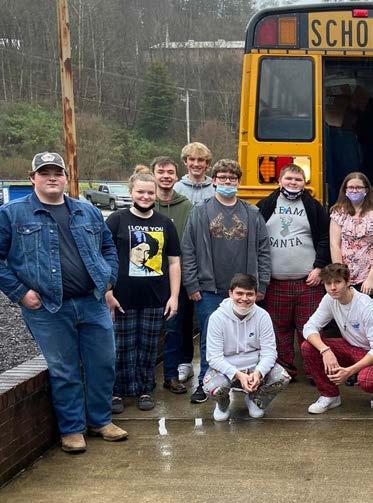
area they live in—they also can’t go to college on a scholarship, and they usually don’t have the money to even afford college. It just keeps on going in a cycle and a cycle. But that’s why we need to change.” One teacher spoke about her experience in a job interview: “When I interviewed, one of the questions was, ‘Do you believe the children in this neighborhood can achieve at high levels?’ I cried when I got off the interview. Why would you have to ask that question? All kids can achieve, no matter what.”
“It’s a challenge for us to not become cynical, to remain compassionate and forgiving and loving.”
“There are so many people in Lexington who are stepping up, and they’re saying, ‘You know what, I want to solve this problem.’”
Resistance and Hope
For Lexington to reach its potential will require overcoming resistance to change that underlies some people’s views. One community leader said there is a split between those who are working for change and those who are “set in their ways,” while another said that when it comes to views on change, the community is “fractured under the surface.” A nonprofit leader heralded the rise of several “young leaders and upand-comers who are pushing for change and for our city to be seen as a place where you can come and feel welcome,” but expressed regret that they face “pushback” from “a much older crowd.” A White resident said plainly that “old money holds back a lot of progress.”
A community leader attributed this entrenched resistance to people being “stuck in the past,” as in, ‘This is the way we’ve always done it and this is the way it will always be done.’” Others described a civic climate where, while it is possible to talk about change, you must “have the conversations in a certain way.” A Black community leader said some of their
peers “don’t want to cause waves, so they go along with what is said because they want to remain at the table.”
Still, even as they named this resistance to change, the vast majority of people we spoke to believe that their community wants to find ways to come together so that Lexington as a whole can reach its potential. “People genuinely want to help and make it a great place for everybody,” a community leader said, even amid their concern about Lexington’s economic and educational disparities. A grassroots leader told us, “There are so many people in Lexington who are stepping up, and they’re saying, ‘You know what, I want to solve this problem.’”
The challenge moving forward is how to engender this larger community spirit.
“I don’t feel like we have internalized a pursuit of the common good into our bones,” a community leader observed. A resident said that the community needs “a collective of people that are willing to lend a hand or sit and listen.” In response, another said: “Let’s do this together, come alongside.”
Lexington’s Education Agenda
Just as Lexington has the opportunity to fulfill its potential as a community, the community has the opportunity to ensure every child can fulfill their potential. Lexington has much to celebrate in its progress on education, but significant challenges remain.
Progress will come only by the community doing its part in partnership with the Fayette County Public Schools.
Based on our conversations and interviews, people in Lexington are calling for a sixpoint education agenda to set a more equitable, inclusive, and hopeful path forward for all of Lexington’s young people and their families. This agenda is rooted in the community’s shared aspirations.
Shared Aspirations for Education
Ensure all young people can get a good education and succeed after graduation by addressing opportunity gaps between neighborhoods and residents, and by authentically engaging the community.

1. Weave a new, stronger web of education opportunities for all students
People said that zip code determines destiny in Lexington. “There are still some pretty deep pockets of poverty in certain schools,” one resident said, “That’s discouraging.” Another said, “The kids see that other schools have things that they don’t have—and that stinks.” A community leader echoed this point: “Our community is very large and the income areas in our community vary greatly. And you have some schools where there’s a full-scale basketball court in the parking lot and then you have another school where they can barely afford to give every kid a popsicle.”
Lexington, overall, has impressive education programs and initiatives to support young people and families. The school system has well-regarded magnet programs, career academies, school readiness efforts, and summer school programs, among its numerous efforts. Additional educational support comes from various organizations and groups, whether through the YMCA, Lexington Children’s Theater, Commerce Lexington, the Fayette Education Foundation, or others.
But the reality is too many young people are still slipping through the cracks, falling behind, and being left unable to fulfill their potential. Too many are losing
hope. A high school student taking Advanced Placement classes, told us, “In the end, you’re still stuck in the same bad school. You’re still stuck.”
The loose net of efforts to support young people and families needs to be rewoven, strengthened, and expanded for all students in Lexington to have an opportunity to succeed. People told us action is required in the following areas, among others:
Availability of programs – Many noted programs are available in some schools but not in all. Lexington’s young people and families are seeking more Pre-K programs, remedial education, expanded summer school programming, and more options for students whose first language is not English. These efforts sit at the heart of ensuring opportunity for all. More resources – In some schools, there are not enough tutors and counselors, and student-teacher ratios are too high. Some schools have more books than others. Many young people do not have the support they need to fulfill their potential.
“In the end, you’re still stuck in the same bad school. You’re still stuck.”
Transportation services – For some young people and their families, there simply is not available transportation to and from programs and events. This effectively closes off many chances for educational growth and improvement.
Information about available resources – People want every young person and their family to have access to information and a real opportunity to learn about available resources. Today, that’s not happening.
There is another vital dimension to this challenge which often gets overlooked. Systems tend to take a one-size-fits-all approach, applying the same solutions in each neighborhood and school; but our efforts to address these concerns must be contextualized according to the neighborhoods, their people, and the schools they attend. Each has different needs, resources, access, and capacity. Each will require different actions. Knowing—indeed, honoring—these different contexts is imperative to success.
2. Strengthen support for young people beyond the classroom
Even before the pandemic, leaders, families, and young people in Lexington were talking about how challenges such as poverty or lack of services are also barriers to educational success. In the harsher light of the Covid crisis, the role of local support for the wellbeing of young people has become a more widespread—indeed, urgent— discussion. For instance, some have said that the economic and emotional toll of the pandemic has contributed to a rise in violence in Lexington, as it has in other U.S. cities and towns. “There haven’t been opportunities for kids, outside of gangs and drugs,” said a community leader. Another resident said, “There’s really not anything for them to do.”
The young people we spoke with agreed. “There’s not a lot of fun places in Lexington to hang out with friends,” one told us, “and places are usually
There is a need both to expand efforts that support young people and to ensure those efforts have a more equitable reach for all young people throughout the community.
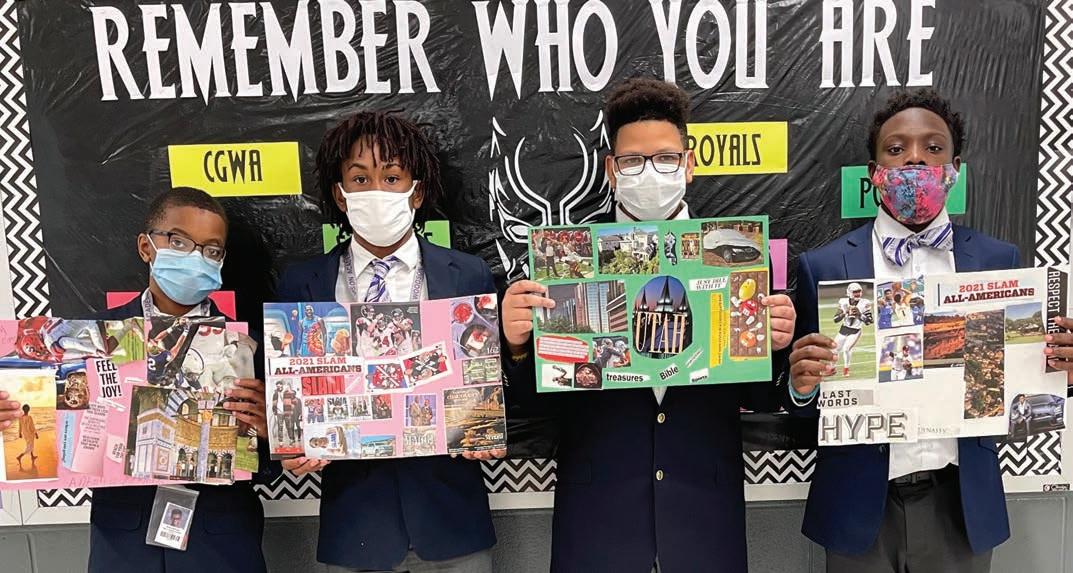
boring and have strict rules now because people go in there and ruin them.” A resident added, “There’s not enough programs and activities for the youth to help them be productive, build self-confidence, see how they fit into society and how they can be positive contributing members of society.” A teacher also expressed frustration that too many programs are implemented through a “checklist” approach rather than with a focus on real impact in the lives of students. The test should be, “Are you seeing the results that are the intention of this goal?” they said.
To bolster the overall well-being of students and their families, the community has developed a host of local programs, some that evolved in more recent years. At the city’s Day Treatment
Center, teachers work with the city government and social workers to help at-risk youth to continue their academic work. Lexington’s Family Care Center is a pilot program focused on young mothers that also helps them prepare their kids for preschool. United Way’s Waypoint hubs will bring together different resources that can support young people and their families in particular neighborhoods. The William Wells Brown Community Center supplements family and student resources with clothing and medical services, among other things.
The list goes on.
But here’s the challenge. There is a need both to expand efforts that support young people and to ensure those efforts have a more equitable reach for all young people throughout the community. Let’s be clear:
this is not simply about doing more. As noted throughout this report, Lexington is awash in initiatives and programs. What’s urgently needed is a more turned-outward approach that focuses on three critical steps:
Actively engage with young people and parents about the support they need and how that support can make a difference in their lives. Understand their aspirations for the lives they seek to create for themselves; this is different from a “deficit” approach that focuses only on what is missing, and not on what people seek to create.
Pay much greater attention to reaching all young people, especially those who face challenges of poverty, mental health, trauma, and other factors. The reality is that too many efforts in Lexington fail to reach those who need them most.
Place a focus on people. Currently, though some efforts are coordinated, even well-aligned, people can still experience these initiatives and programs as fragmented, confusing, and overwhelming. People need a more seamless delivery system that starts from an understanding of their needs and aspirations and not simply from the goals of a program or agency.
Supporting young people and their families outside of the classroom is a critical part of ensuring that they can fulfill their potential—that they have a genuine sense of possibility and hope.
3.Invest in the full range of pathways to success for students
While community leaders described a “big push” across the Lexington region to improve career readiness and technical education, many we talked with said that post-graduation options besides college are still undervalued and under supported. “We say we value education,” a parent told us, “but whenever it really comes down to it, we value higher education,” and not a full range of life and career paths. “College is not for everybody,” another resident said. A high school student said, “They only talk about the fact that you should go to college. They don’t talk about any other options.” A teacher highlighted this emphasis on college, saying that students need to know “we see value in all people,” regardless of what paths they take.
Several local programs already seek to address this need, including the Opportunity College program at Bluegrass Community and Technical College and Commerce Lexington’s project conducted in partnership with local schools. The Academies of Lexington—created to support “job readiness” not only college readiness— relies on its students to help create their curriculum. Not only does this help kids discover what interests them, but it also “keeps them more interested in school,”
according to one local leader. The Wall-to-Wall Career Academy was also mentioned but was said to serve only a limited number of high schools.
According to those we talked with, a number of actions are needed, including:
Talk more actively and openly with young people and their families about the value and options of post-graduation pathways beyond traditional higher education. In order to shift the dynamic in Lexington, this is essential. All students and families must feel supported and know they have real options and that those options are respected and valued.
Increase partnerships with business and training programs to expand and deepen career-focused and technical college options for all students.
Ensure young people and their families can see the full array of options and gain easy access to them, rather than having to navigate a fragmented system.
Engage students and parents to better understand their aspirations and needs.
Investing in a full range of possible pathways for all students means more than launching new programs. It means a fundamental commitment to ensuring that students and families feel seen and heard, feel valued, and believe that they have a future.
4. Create a new ethic and standards of cooperation between schools and the community
There are a host of school-community partnerships in Lexington. The business community supports educational opportunities in a variety of ways—

“They only talk about the fact that you should go to college. They don’t talk about any other options.”
The ability to create stronger partnerships is at the heart of making education a shared responsibility, where the community itself steps up and does its part.
through Commerce Lexington projects, pilot programs in career training, and other timely resources offered during the pandemic. One Lexington and the district’s Community Partnerships Leadership Team are hard at work building partnerships. A variety of school-community partnerships are highlighted throughout this report. Indeed, the community has enormous resources and capabilities to support and serve young people and families.
Despite years of efforts by nonprofits, neighborhood groups, the private sector, foundations, parents, and others, many people in our conversations said that partnering with Lexington’s schools, including the school board, can be complicated, difficult, and slow. “It’s not clear to me who I would reach out to for different projects I’m working on,” one local education expert said. “It’s very much who you know.” A corporate leader told us, “The school system has to figure out a way to allow people to help. When we went to talk to them, just to get some ideas, it took almost two years for them to figure out what opportunities we could get involved
with.” Another community leader told us, “Whether it be organizations, volunteers, families, or businesses, the community desire to engage FCPS exceeds FCPS’s ability or capacity to navigate, manage, and train that desire.”
These challenges occur both at the district level and between individual schools and the district. A community leader said one school principal advises partners to “come directly to us” for possible projects, and not to go through the district office, “because of politics.”
To make the most out of community investment in education, FCPS must develop a new, stronger way to open itself up and partner with the community—from how it initially engages with possible partners to working through possibilities with partners, forging partnerships to the implementation of those partnerships. The ability to create stronger partnerships is at the heart of making education a shared responsibility, where the community itself steps up and does its part. Nothing short of a new ethic and standard of cooperation is called for.
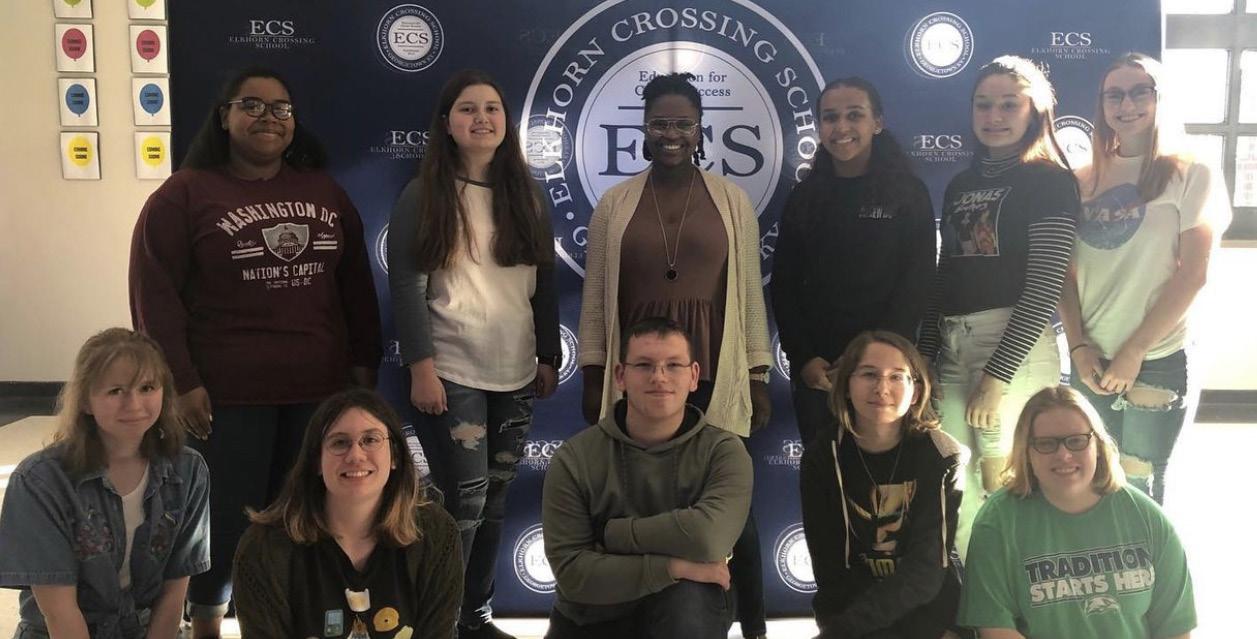
5. Hire and retain teachers who look like the community
People throughout our conversations said there is a need for a more diverse pool of teachers that looks more like the community. “It is discouraging when you go into a school system and you just don’t see very many teachers of color,” a community leader said. “I want my kids to see people who look like them,” a parent told us. “I want them to have somebody who they identify with.”
A Black resident said they had experienced first-hand the power of a student seeing an adult in their school that looks like them. “I know when I go to the school, especially with the young African-American males, when they would see me coming it’s like their eyes would light up. That tells me they’re not seeing enough of [Black adults] in the school. You see what I’m saying?” He went on to say, “You don’t see a lot of African-American or Hispanic teachers.”
Greater diversity in teachers would enable a deeper understanding of what children of color are experiencing in school and in their
“I want my kids to see people who look like them.”
lives. “The teachers that are coming in, they’re young, straight out of college, typically White, and they don’t understand,” a resident said. “It’s not that they don’t want to, they just can’t. They haven’t had the experiences.”
Along with teachers, many residents, community leaders, and educators also said schools need more bilingual staff and leaders, as well as more training for all teachers regarding the experiences of Black, Latino, and immigrant families. “We need to keep looking at policy and adjusting it to be equitable,” a community leader remarked.
Another community leader acknowledged that hiring a more diverse workforce isn’t always easy, saying we need “to have that pool to be able to pull from.” Still, one community leader emphasized the importance of pressing ahead, saying students of color, especially, would benefit from seeing teachers who look like them. “See it, be it,” was how they expressed it.
6.Put the community’s voice at the center of education
Parents, families, and students in Lexington are seeking a stronger voice in education. Currently, some feel they have no voice at all, others say that poorer communities and communities of color are “invited, but not welcome,” and those who raise difficult issues or questions often feel shut out, or even fear repercussions.
As one resident said, “If your needs match someone else’s who has more clout, then things get done. If you don’t, then, ‘Thank you.’ Crickets.” Indeed, when it comes to engaging parents, one teacher said there can be a “subconscious assumption” and doubt among parents who ask, “Do you really have something to offer?” In other words, “If you’re a parent who works multiple jobs, is of lower socioeconomic status, or maybe doesn’t speak English as a first language, will you support the school? Do you have enough assets?”
Community organizations and FCPS have worked to engage the community in a number of ways. There was a “listening tour” during recent superintendent searches, the “On the Table’’ discussions organized by the Community Foundation for the Bluegrass and CivicLex, initiatives like “Face It” from the school district’s Family and Community Engagement office, Kentucky Student Voice’s work with students on policy issues, and the Prichard Committee’s work with parents and residents on equity issues and leadership development, among other efforts cited in this report. To varying degrees, school PTAs and School-Based Decision-Making councils also provide mechanisms for people to engage.
But these efforts do not go far or deep enough. Some PTAs work and others don’t. Some SBDM councils are effective, while others have been
A new effort to discover and uplift the community’s voice would help to refocus public discussion.
described as obstacles to change. The numerous community and FCPS efforts to engage parents, students, residents, and other stakeholders are promising, but, based on our conversations, these have not satisfied people. Equally important, the community’s voice does not appear to be strong enough, wide enough, or deep enough yet to create the necessary community cohesiveness and public will for change.
There are different avenues for action. PTAs could be strengthened, as could SBDM councils. That would benefit each school. At the same time, an organization, or coalition of groups, could work to more widely engage parents, students, residents, and other
stakeholders on education issues, to lift up the community’s voice on education. This would need to be a sustained effort over time; the effort would need to ensure the community is authentically part of decision-making; and it would need to focus on holding the community and FCPS accountable to work toward meeting the real needs of young people, their families, and the community as a whole.
A new effort to discover and uplift the community’s voice would help to refocus public discussion and subsequent actions on what matters to people and provide a greater impetus for actions that truly address people’s shared aspirations and needs.
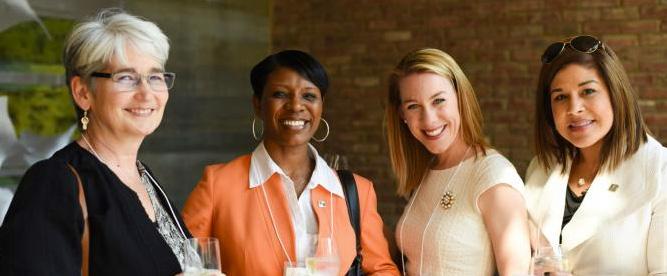
Lexington’s Public Capital
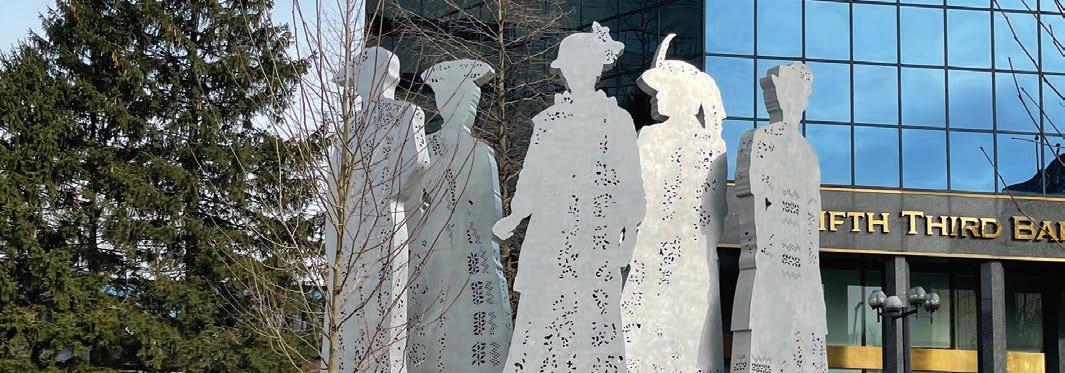
The Harwood Institute’s research and on-the-ground initiatives in communities across the U.S. and elsewhere suggest that for a community to work effectively it needs a web of fundamental structures, networks, and norms. “Public capital” is what we call this rich, complex system. Nine factors make up The Harwood Institute’s definition of public capital, each of which a community can actively develop.
In this section, we offer a close look at the Lexington community through the lens of public capital. This framework should be thought of as a touchstone— not a scorecard—for understanding the current conditions of Lexington and how to strengthen the community so it can tackle its challenges, especially on
education, and create a greater sense of possibility and hope.
While trying to picture how public capital works, keep in mind an ecosystem that exists right outside your door—or put more simply, how our air, water, land, and habitat interact daily. On their own, each of these factors seems quite simple and isolated at times. Indeed, each is often talked about as an independent element. What makes an ecosystem work is the robustness of each element and the healthy relationships between and among them. Public capital operates in much the same way. The nine factors are at once independent and yet highly interdependent. It is the rich, complex interaction between them that makes a community work.
Public Capital
An Abundance of Social Gatherings — that enable people to learn about what is happening in the community and begin to develop a sense of mutual trust.
Organized Spaces for Interaction — where people can come together to learn about, discuss, and often act on common challenges. These spaces help a community begin to identify and tap resources to address concerns.
Catalytic Organizations — that help engage people in public life spur discussion on community challenges and marshal a community’s resources to move ahead. These organizations help lay the foundation for community action, but do not act as the driving force.
Safe Havens for Decision Makers — where a community’s leaders can deliberate and work through community concerns in “unofficial,” candid discussions.
Strong, Diverse Leadership — that extends to all layers of a community, understands the concerns of the community as a whole, and serves as a connector among individuals and organizations throughout the community.
Informal Networks & Links — that connect various individuals, groups, organizations, and institutions together to create the cross-fertilization effect of experiences, knowledge, and resources. People carry and spread ideas, messages, and community norms from place to place.
Conscious Community Discussion — where a community has ample opportunity to think about and sort through its public concerns before taking action. People play an active role in helping decide how the community should act.
Community Norms for Public Life — that help guide how people act individually, interact, and work together. These norms set the standards and tone for people’s engagement.
A Shared Purpose for the Community — that sends an explicit message about the community’s aspirations and helps reinforce that everyone is headed toward a common goal.
Recall that to understand the public capital of Lexington, The Harwood Institute conducted extensive conversations with community residents that spanned a nine-month period. We also interviewed thirty-six community leaders. What follows are the insights that emerged from these engagement efforts.
An Abundance of Social Gatherings
One of the most tangible dimensions of public capital is the presence of social gathering places. From youth sports games to potluck dinners, these are occasions for people to learn about what is going on in the community, forge relationships, and begin to develop a sense of mutual trust. These gatherings are the seedbed for creating and maintaining public capital.
WHAT’S GOING ON?
There is an abundance of local gathering places. People throughout Lexington quickly named places where they gather with friends, neighbors, family, and civic and business associates. Local parks and public libraries, the farmers market, Distillery District, and community centers all serve as vital connection points; so do churches. For some folks, the local beauty shops and barbershops are places to connect, places where word gets around. For others, it is home-school gatherings.
Some gather for coffee at a local Panera and others at places in coffee shops around UK. The list of gathering places was long and varied.
Festivals, cultural events, and sports are opportunities for people to mix together. A wide range of arts and cultural events were highlighted in these conversations, including the Woodland Art Fair, Loudoun Art House in Northside, Roots & Heritage Festival, Festival Latino de Lexington, and DiverCity Festival. People noted that UK sports provide an opportunity to come together. As one resident said, “College sports is a really big deal, especially basketball and football, with baseball surging!” Another resident singled out the diversity of artisans and shops under one roof at the Julietta Market which is “focused on locally owned spaces, entrepreneurs from Lexington.”
Social gatherings were part of the response to Covid. The community’s response to Covid has underscored both the critical importance of social gatherings and people’s keen interest in them. While the city and local organizations have launched new social gathering options during Covid, such as the Northside Nights concerts in Castlewood and Douglass Parks, we also heard about numerous neighborhooddriven gatherings. “Everyone would come out of their house to the front yard because we weren’t going anywhere,”
“Sometimes a lot of those people all come together and it’s great, but then everybody goes home to their little pockets.”
a resident said. “Sometimes it happens right in the middle of our street. They would just talk on the sidewalk. And you would get into some pretty heated debates about what education should look like in a pandemic.”
WHAT LIES BEHIND IT?
Lexington is a neighborly place. People in Lexington value their connections to the neighborhoods they call home as well as to the gathering spaces where they connect with friends and colleagues from the wider community. Lexington has a small-town vibe, where people know each other and value their relationships.
Pockets of people. “People stay in their part of town,” a community leader raised in Lexington said, “and gather with people they know.” Another resident wished that people could “somehow be informed and enlightened about what the world is like outside of their bubbles and their neighborhoods—that’s happening just right down the street.” These separate and parallel gathering habits often mirror the racial and income divides in Lexington.
“Intermingling” is happening but may be limited. There are places where people from different neighborhoods and backgrounds do gather together— from concerts to sporting events, and from arts festivals to farmers markets— but it is unclear how much people really interact in these spaces. Several people said they wished for more spaces where different groups in Lexington can engage with each other. “Sometimes a lot of those people all come together and it’s great,” one resident said, “but then everybody goes home to their little pockets. So, I want to see more intermingling between all the different little pockets.”
Will the spaces born during Covid endure? People talked about how some gathering spaces were created in response to Covid. Such spaces often emerge in response to natural disasters or man-made challenges only to dissipate afterward. Lexington will need to act with intentionality in order to maintain these gathering spaces and the connections that have flourished within them.
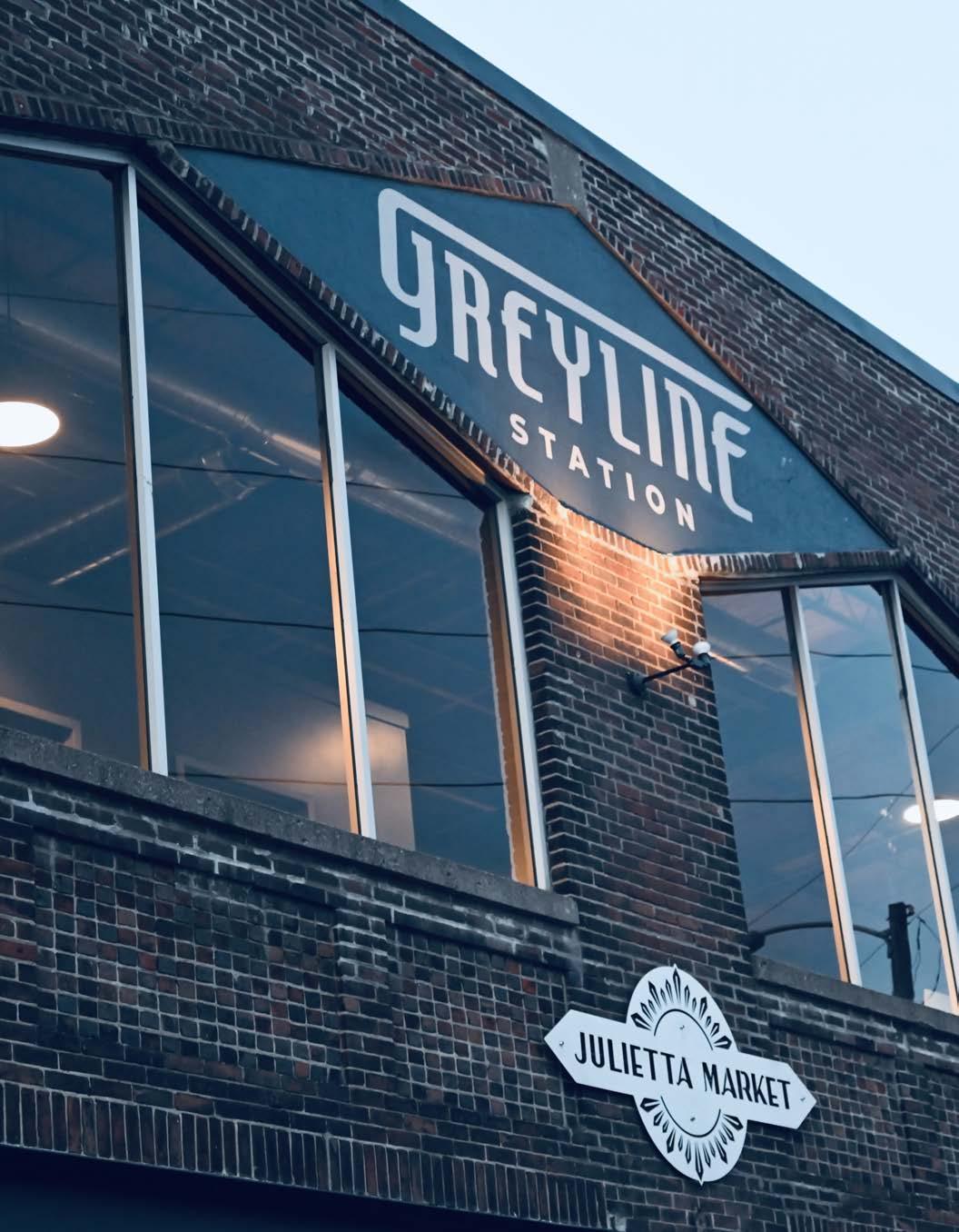
Organized Spaces for Interaction
These spaces provide room for people in a community to come together to learn about, discuss, and often act on common challenges. Organized spaces for interaction help a community begin to identify and tap resources to address concerns. The focus is on the opportunities that exist for people to come together—and not necessarily the existence of physical buildings.
WHAT’S GOING ON?
There is a healthy mix of organized spaces for interaction in Lexington. Several people mentioned One Lexington, which convenes service providers in a collaborative approach to violence protection, working via community centers. The Prichard Committee for Academic Excellence has an equity coalition based on broad outreach; the city has Partners for Youth and youth advisory councils in neighborhoods; CivicLex has brought people together on policy issues and people’s connection to local government; United Way of the Bluegrass regularly convenes nonprofits and other groups around several issues, including recent dialogues after the murder of George Floyd. The Senior Center, public libraries, The Lexington Forum, Commerce Lexington, local churches, various neighborhood
associations, and others are all creating spaces for people to connect, listen, and solve problems.
The school district and community groups are coming together. For example, Big Brothers Big Sisters and the school district’s Family and Community Engagement (FACE) have been holding local mentoring programs. A community leader said, “The agencies have really come together to support kids. There’s been a huge amount of collaboration to make sure that they’re still getting the support they need for educational purposes.” First Five Lexington, a consortium led by the school district’s Early Childhood group and FACE, promotes school readiness. The district gathers youth-serving agencies to discuss summer learning, which during Covid has gone “all out” in their efforts to create a space for these groups to work together.
Some PTAs and SBDM councils are making a difference. People identified PTAs that have been highly effective in bringing parents and educators together to make a difference. Others said that PTAs “have great potential, but they need to become more flexible in the approach they use to connect with parents,” as one community leader put it. One resident said parents would like to have more discussions with teachers, asking, “What stands in your way? What are the things that you want for the kids?” Some PTAs
“I would characterize it as high levels of coordination but not necessarily high levels of collaboration.”
only see activity when parents have an issue that affects their own child, while others limit their focus to fund-raising. With SBDM councils, while some were reported to be effective, many are seen as captive to a small group of parents, community leaders, and school officials. Many people simply don’t want to engage with the councils. As one leader told us, “A lot of people feel beat up,” and some parents even look back and think, “I was mistreated in the school. I don’t want to go over there.”
WHAT LIES BEHIND IT?
Despite a habit of gathering, are people working together? There is a well-developed practice in Lexington, at virtually every level of the community,
of bringing people together around community and education issues, but there is a question about the extent to which such groups actually work together. “I would characterize it as high levels of coordination but not necessarily high levels of collaboration,” one leader explained. “I do think we check in with one another in terms of schedules and who’s doing what, but I’m not sure that we actually jump in together. So there might be some promise in thinking about how we can move from coordination to more genuine collaboration. That may be part of a strategic approach moving forward,” they said. Another leader said, “Sometimes people are so focused on keeping the train on the track and they don’t develop conductors and people to steer the train.”
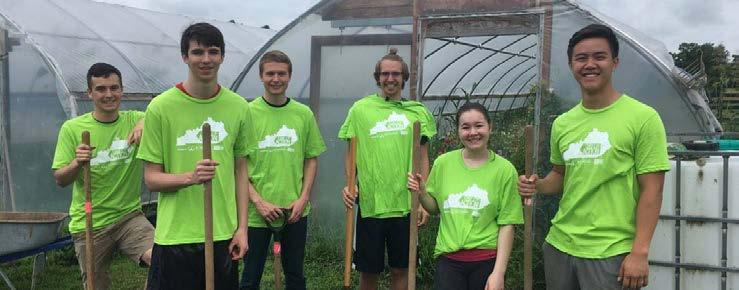
Too little real change. While there are many organized spaces focused on creating change, people said these efforts produce far too little in actual results, and that too often they duplicate existing efforts. This often strains leaders’ capacity and time. One leader commented that when approached to do yet another project together, many leaders’ responses are: “‘Let’s do another project together?’ We’re like, ‘Listen, we’re freakin’ tired. Okay? We already have a project. So I don’t want to come to some leadership group for you to tell me to do another project.” Over and again, people complained that these spaces were producing too little to promote real, sustained change.
A lack of inclusion. Many spaces simply do not include all voices. “Meetings that I’ve gone to always have been among the people with the biggest names. It’s never been Ms. Smith who sits on her front porch and knows what’s going on in her community,” a community leader said. Another told us, “I was on the local decision-making council for my children’s high school for five or six years
and there were always the same people, the same set of parents who were engaged.” And another noticed, “People of color don’t feel comfortable in official spaces for interaction.” The reasons for this discomfort are varied, including being “intimidated” by unfamiliar formal spaces, to having to pay PTA dues that many people cannot afford. A consistent theme heard throughout these conversations is that the same groups, the same parents, and the same leaders tend to be included, and that single parents, low-income individuals, Hispanics, and other people of color are not part of many conversations.
Doubt and distrust are rampant. The lack of inclusion or progress in many organized spaces has led to an undercurrent of doubt, even distrust, in the community. This creates another barrier to participation for residents and community leaders. In many meetings, people tend to “speak past each other.” Input is valued only when people agree with those in power, and too many meetings are said to be poorly run. For community members who have
“Change doesn’t happen, because people want to keep their seats at the table, so they don’t want to rock the boat.”
shown up and spoken up, meetings like these have proven unwelcoming. “To share a different perspective is almost dangerous,” one community leader said, echoing earlier comments about the dangers of “making waves” in Lexington. Another said, “Change doesn’t happen, because people want to keep their seats at the table, so they don’t want to rock the boat.” Despite various efforts that have produced progress, many people harbor distrust and doubt about what real changes, if any, will emerge.
Catalytic Organizations
Catalytic organizations engage people and institutions in the work of public life, spur discussions on community challenges, and marshal community resources to move ahead. These
organizations help lay the foundation for community action, but once an initiative is up and running, these organizations often move on to the next challenge.
WHAT’S GOING ON?
Some organizations are beacons of progress. There are established organizations that have won admiration across Lexington for their ability to engage people in public life and to spark shared action on common challenges. Some of these include the NAACP, the YMCA, Urban League, Community Action Councils, B.U.I.L.D., the Prichard Committee, and the public library, among others. United Way of the Bluegrass was mentioned repeatedly for its efforts to bring groups together to catalyze action during Covid and for the new Waypoint Centers.
“There’s a lot of talk and not enough action. Talk’s cheap.”


“The people that have the funding and the power don’t always ensure that the funding gets to the people on the ground.”
Newer groups are making a difference. CivicLex was named by a number of people. A community leader said the “impetus” of the group “has been to help connect Lexington not only to one another but to local government.”
Another new initiative—focused on the Latino community—is the Centro de San Juan Diego, which grew out of the local Catholic diocese. One Lexington was highlighted by many people, as was the The Fayette Education Foundation, a new group that’s been around for about six months, focused on equity and unmet education needs. “They’re coming out with a powerful punch” because of the hot topic of racial justice and equity, according to a community leader. In the grassroots leaders conversation, the after school program Common Good was noted.
WHAT LIES BEHIND IT?
Where’s the commitment to real change? Despite the many initiatives in Lexington, people continue to ask whether these activities have really led to action. A community leader noted similarities between a recent report and
a report from ten years ago, saying, “If we’re still using the same strategies that means maybe we’re checking off boxes and not necessarily implementing.”
Another leader said, “There’s a lot of talk and not enough action. Talk’s cheap.” A resident characterized many efforts in this way: “It’s like the flavor of the week,” as if people just say “‘Oh, this seems like this is a neat idea.’” But community leaders said they don’t see enough follow through. And an education leader said about a recent effort, “From the surface, it seems like we’re committed.”
Fragmented efforts miss a view of the whole community. While there are many efforts throughout Lexington, too many of these may operate from their own narrow perspectives. A community leader said that many groups and leaders are not “on the ground, really listening to what the community needs. They see a perceived need, and that’s what they try to fix.” Efforts remain siloed from one another, and organizations and groups seek to protect their turf or make sure they get credit. “Sometimes things are territorial,” a community leader said,

observing people work from an attitude of “‘What can you do for me to meet my goal?’ instead of, ‘How can we work together to reach the goal?’” These disconnected efforts can fail to engage young people and families holistically. A grassroots leader said, “There needs to be a touch-point for students from the broader community.” Working in silos, people may run harder and faster, but they miss out on a full perspective or a broader impact.
Many efforts go underfunded. There is a prevailing sense that many community programs lack the funding they deserve.
One community leader said that some groups work “on a shoestring budget.” Another said, “There have been initiatives that were successful, but for one reason or another they don’t
continue,” citing an example where a PTA training for parents ran out of funding. Another leader pointed to the observation that “everybody here is working so hard in their organizations to keep their organizations going, keep the lights on.” The lack of funding makes it much more difficult for groups to stay focused on their work. And there are concerns about whether some people making decisions about resources know best where those resources should go. A grassroots leader noted, “When we talk about investment, we need to shift from assuming that the people in leadership know where those funds should go to.” Another community leader made a similar point: “The people that have the funding and the power don’t always ensure that the funding gets to the people on the ground.”
Safe Havens for Community Leaders
Safe havens are places where community leaders can come together to talk and work through community concerns in “unofficial,” candid conversations.
WHAT’S GOING ON?
Leaders have lots of meetings and interactions, but few safe havens. While many leaders talked about how they network informally, through opportunities in their day-to-day work and partnerships, very few had examples of safe havens— unofficial spaces where leaders can connect and speak candidly outside the demands of their daily obligations. Instead of safe havens, most leaders simply have the places they run into each other. Several people pointed to annual fundraisers and awards dinners, or other associations and professional networks, as potential places for such discussions. Some also mentioned having discussions at school and sports events.
People are craving a safe haven. “I have always wanted to have kind of a salon-type thing where you can just get some key thought-makers in a room,” one community leader said, noting in particular that issues like affordable housing or schools challenges are “so intertwined” that solutions naturally require diverse perspectives, resources, and the room to think freely with others.
WHAT LIES BEHIND IT?
People in Lexington set up formal ways to interact. Beyond the many informal chances for interaction in Lexington, the norm in the community is for people to establish new plans, groups, networks, or other mechanisms to engage one another and work together. As noted, other interactions tend to take place through social gatherings or existing associations, and these tend to bring together like-minded people and people of similar backgrounds.
“We all have the capacity to connect with each other, to make Lexington a lot better. So I just think we have to keep our feet to the pedal.”
Convening leaders is hard—especially across communities or sectors.
Sometimes getting leaders to come together is like “corralling smoke,” one community leader explained. Leaders from different areas don’t tend to meet up. On the other hand, a participant in one of our group discussions looked around the room and said, “We all have the capacity to connect with each other,
“There are not enough people of color in leadership roles.”
to make Lexington a lot better. So I just think we have to keep our feet to the pedal.” They added that “sometimes we have to go outside of who we think we are to get what we need for the people that we serve.” And a community leader said it is especially difficult in Lexington to bring together leaders who look different from one another.
Strong, Diverse Leadership
Strong, diverse leadership must extend to all layers of a community. Leaders must understand the concerns and aspirations of the community as a whole; they must serve as connectors among individuals and organizations throughout the community.
WHAT’S GOING ON?
Leaders are plentiful in Lexington. Throughout these conversations, people named a huge number of leaders—too many to note here. Some of these are new leaders, while many others are well established in the community. Among those mentioned repeatedly were: Lisa Adkins (Blue Grass Community Foundation), Rosz Akins (Black Males Working Academy), Rachel Belin
(Kentucky Student Voice), James Brown (city council), Eli Capilouto (University of Kentucky), Penny Christian (local PTA leader and activist), Heather Dieffenbach (Public Library), P.G. Peoples and Annissa Franklin (Urban League), Lisa HigginsHord (University of Kentucky/Mayor’s Commission on Racial Justice and Social Equity), Timothy Johnson (United Way of the Bluegrass), Devine Carama (local hip-hop artist, One Lexington), Marcus Patrick (Urban Impact/Woodhill Community Center), Miranda Scully (FCPS), Tanya Torp (Step by Step), Yajaira Aich West and David Kidd (PNC), and Richard Young (CivicLex). Many credited Leadership Lexington as a hub for leadership development.
Many “everyday people” are deeply trusted leaders. In conversations with both leaders and residents, people also spoke of leaders who are deeply rooted in the community, change agents working outside of the spotlight, and making things happen in their local spheres. “You see them in community centers,” one resident said, “where kids say, ‘Hey, we want this,’ and then they take initiative to help with that
program. You see grandmothers who are reinvesting in their community, and kids that were once the younger kids, now becoming leaders working with students.” These local residents include a former basketball coach who launched a school-based program, local pastors, school teachers, and community center workers, among others. Such leaders are often the lynchpin in building community and creating change that people trust.
Parent and younger leaders are being developed. Some people praised the work done by Partners for Youth in creating the Neighborhood Youth Council, which develops young people to become leaders. In addition, people highlighted the Prichard Committee’s parent leadership program as especially effective. One community leader expressed optimism about parent leadership over time: “More parents are becoming aware of their power. My hope is that more will run for school board or the PTA, or be on SBDM, especially our parents of color who have traditionally felt, ‘No one’s going to listen to me.’”
WHAT LIES BEHIND IT?
Lexington recognizes it needs more diverse leadership. “There are not enough people of color in leadership roles,” a community leader said emphatically. We heard this repeatedly. Another pointed out, “There are not many Black nonprofit leaders,” and still others noted an absence of Latinos and other people of color in many leadership positions. “So when we talk about how decisions are made, the types of leaders that we have are not the leaders that normally look like anybody in this group,” a Black grassroots leader said. There is deep frustration among some about this lack of diversity in leadership. People argued that there is a need for much stronger commitment to, and a pipeline for, developing diverse leaders.
Repercussions for “making waves.”
Many leaders in Lexington said they were frustrated, even angry, about the inability to raise certain issues safely in conversations, and this was especially true for the people of color we talked with. “Diverse leaders sometimes
“Being invited is not the same as having a voice and making a difference. Being invited is not the same thing as being respected when you get there.”
can’t speak up the way they want to because they want to keep a seat at the table,” one Black community leader said. Another said, “You stay in your place. Don’t talk about that. You stay in your lane.” And another community leader said, “The gatekeepers in a utopian world would be from all sorts of backgrounds. The gatekeepers now are White people who decide if they want to include more people.” Yet another expressed “deep frustration with the way business is done,” saying, “even when we get invited, it’s not working. Being invited is not the same as having a voice and making a difference. Being invited is not the same thing as being respected when you get there.”
More leaders with deeper community connections are needed. Many leaders are not seen as deeply connected to
the community—and people told us this needs to change. “The city thinks that they’re doing a great job,” one resident said. “And I like the councilman. I know him. I’ve met him. He has good intentions. But I don’t think he knows how—or has the capacity—to reach into the neighborhood. That goes for other people that consider themselves leaders too.” An alumnus of the Leadership Lexington program said, “A lot of the issues that we brought up in the class were issues that this organization had not thought about. Yet this organization is connected with all of the city leaders. It’s connected with all of the corporations.” People expressed frustration that too many leaders do not understand the lives of their fellow Lexingtonians. Even a community leader said, “Leadership does not always understand the lived experiences of others in the community.”
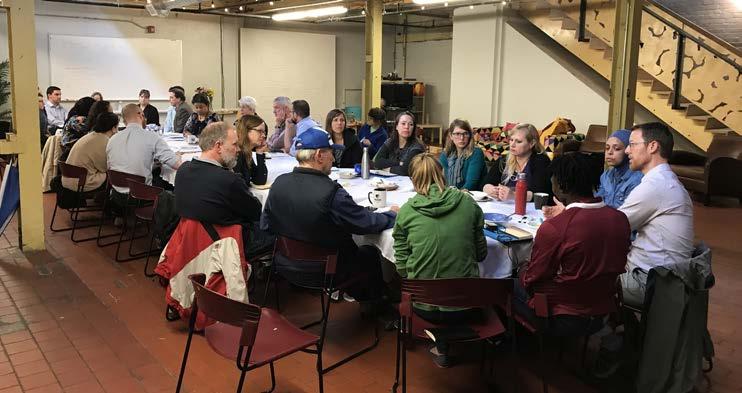
A dysfunctional school board. The Fayette County school board was repeatedly criticized as dysfunctional and ineffective. “They spend school board meetings trying to make blows at each other,” a community leader said. A lack of diversity on the school board was also a common theme. Another community leader said, “People I know are like, ‘I look at this school board, and they don’t look like me. I don’t know that there’s trust from everyone.’” People noted widespread mistrust of the school board. After the death of the previous school superintendent, one community leader said, “Holy crap, we’re in a pickle now because we have a school board that we don’t feel we can trust. We have an allWhite school board and they are clueless and there are personal agendas in play.”
Informal Networks and Links
Informal networks and links work to connect various individuals, groups, organizations,and institutions together to cross-fertilize experiences, knowledge, and resources. Through these networks and links, people carry and spread ideas, messages, and community norms from place to place.
WHAT’S GOING ON?
Lexington has lots of networks. Lexington is a community of relationships where people want to
work together to get things done. An array of civic networks have formed over the years. Some are more informal— based on loose affiliations—while others have become more formalized. Among these networks are the Business and Education Network, which works with public schools; B.U.I.L.D., a group of faith-based leaders and congregations; the school district’s Community Partners Leadership Team, which consists of about 40 different organizations and groups; the Prichard Committee’s parent leaders; the network of local neighborhood associations; and the many networks related to groups like Commerce Lexington, The Lexington Forum, Leadership Lexington, and several others.
There are also vibrant residentcentric networks. Lexington has a rich collection of networks driven by and for residents. Some networks have grown out of neighborhood contacts and parent groups. For instance, CreativeMornings Lex is a volunteer-run network that hosts monthly gatherings for people interested in creativity. Child care centers have been a good place for parents in particular to network, exchange information, and chat as they pick up their kids. Churches play a key role in social networking, especially among the Black community. People in our conversations also said that church communities have been a critical
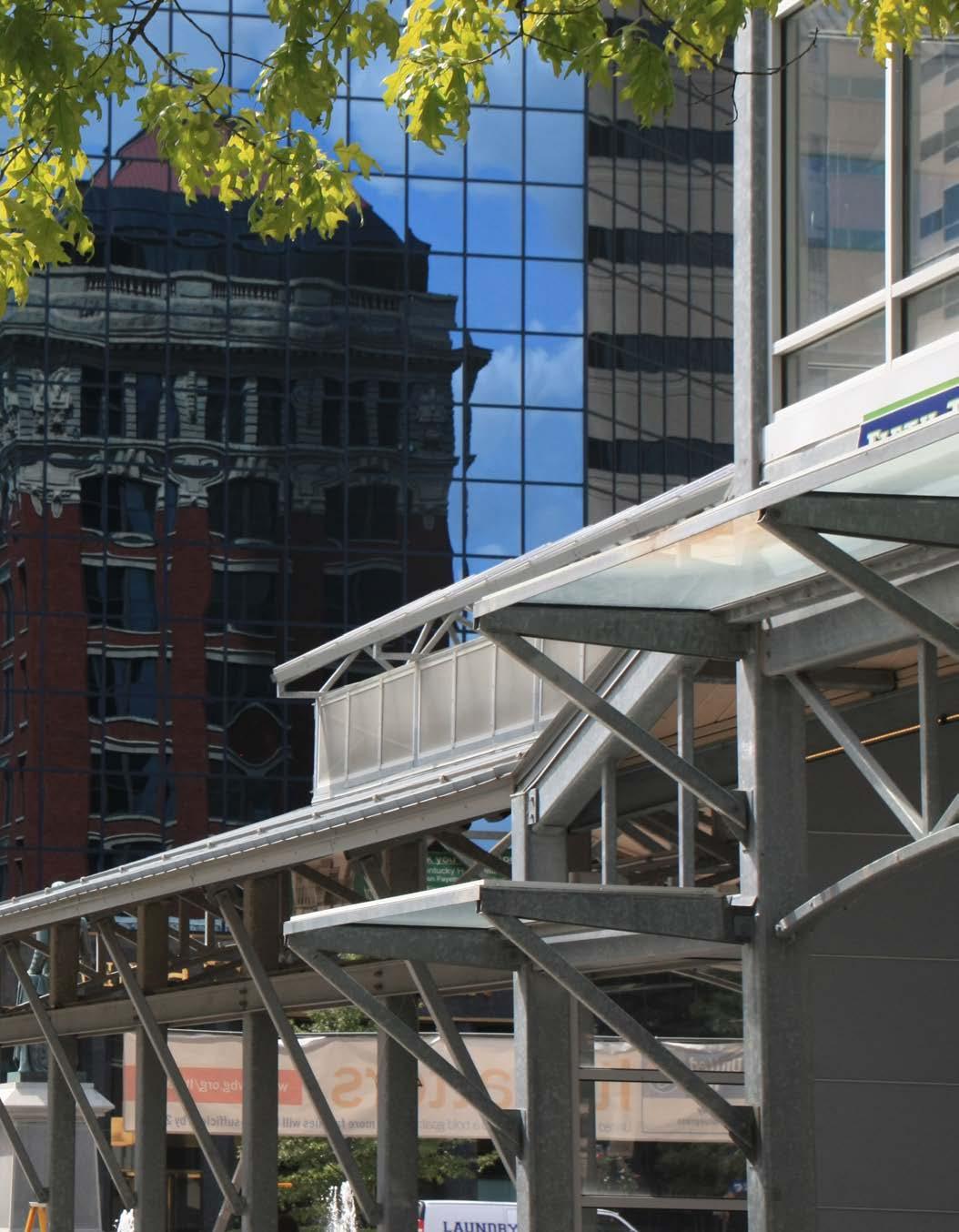
pathway for people to meet others from different parts of the community.
Online networks are both good and bad. Before and during Covid, online platforms have provided a way for people to connect. One community leader said that the school district was just beginning to realize how much parents rely on Facebook groups for information. They said the district recently hired a social media “guru” to try to be more strategic. Another resident said social media, “is really robust… whether it is a parent or your friend in a local mom’s Facebook group posting on something they saw or did or a resource.” But these interactions are not always positive or productive. According to another community leader, “There was one Facebook group called ‘Let Them Learn,’ which got really vicious and really mean really quickly.” Another said, “You can totally create your own reality where you don’t have to see or read or hear anything that is different from whatever you already believe. At this point, we’ve unfriended and unfollowed and uninvited each other where we are in our own private echo chambers.”
WHAT LIES BEHIND IT?
Lexington is a patchwork of separate networks. There appears to be little cross-pollination between networks, especially those made up of organizations. As one community leader said, “The tendency for networks
is to be isolated from one another.”
Another said, “You end up with a quilt, not a tapestry,” where “the whole is not greater than the sum of the parts.” This separateness was also the case for the resident-centric networks. One resident said, “The neighborhood sense of community is a much tighter feeling than the broader Lexington sense of community.” And a community leader added, “Lexington is kind of in our own bubble. People stay in their part of town and gather with people they know.”
Networks tend to be made up of likeminded individuals. Echoing themes from elsewhere in this report, people said that Lexington’s networks tend to form within familiar circles and stick to their own perspectives. One community leader said, “People don’t do a good job of making space for all people or for those with differing views.” Territoriality was also mentioned, and a lack of links between different types of people.
One leader put it this way: “Parents are talking to other parents, employers are talking to other employers. Sometimes there are conversations between the employer community and educator system leaders, but I don’t think there are a lot of places where conversations are happening across systems.”
It’s about who you know. A strong undercurrent in conversations with both residents and community leaders was that Lexington runs on social ties. This

increases the closed-off nature of local networks, especially for individuals who are people of color, low-income, or newcomers to Lexington. “The way Fayette County is organized, it’s about who you know, and who knows you,” a resident said, adding, “I think some of the folks pride themselves on that. They want to stick to what’s familiar with them. They live in the same neighborhoods, they go to the same grocery stores, they worship in the same places, those types of things.”
Another said, “If you’re not part of a church or some sort of formal group, and you don’t have an existing personal connection, it would be difficult to belong to a network here.” Many people also suggested that individuals with wealth and power were likely to be the ones controlling decisions.
Conscious Community Discussion
It is through conscious community discussion that a community creates opportunities to think about and sort out its public concerns before taking action. Communities that work together make a conscious point to constantly engage each other—citizens, institutions, leaders, and others. This is a key part of creating a shared sense of purpose and direction within the community.
WHAT’S GOING ON?
Efforts to engage the community are increasing. Various groups and organizations have worked hard to engage the community in meaningful conversations on important issues—and these efforts seem to be growing over time. People point to the school district’s “listening tours” with residents during the superintendent search. The removal of Confederate statues from the Old Courthouse and the launch of the new summer school program both grew out of intensive efforts to engage the community. The “On the Table” discussions organized by Blue Grass Community Foundation and CivicLex were cited multiple times as examples of inclusive, safe, and constructive conversations. A community leader said these efforts were particularly good at promoting robust and healthy conversations. “I saw people who are super angry and people who are really
ready to make change. People that are just different in different spaces. It’s a space of learning. So that’s how they set it up.” CivicLex also has partnered with The Lexington Herald-Leader on “Our Voices,” a project that draws upon community members to write about the topics and issues most familiar to them.
Lexington has lots of good, informal conversation. As mentioned elsewhere, community issues drive plenty of informal discussions “at the grocery store, or at church, or at a ballgame, or at an event,” as one community leader said. When it comes to education, another leader said, “It comes up at every social meeting and work meeting.” A resident told us that during this period of Covid, “Everyone would come out of their house to the front yard because we weren’t going anywhere, and they would just talk on the sidewalk” about education and other issues.
The community needs more courageous conversations. Many people said that Lexington needs more open, honest, and in-depth conversations. People were particularly focused on how Lexington would benefit from conversations surrounding mental
health, gentrification and housing, racism, and education. One community leader said that, while there may be conversations about education, “We’re not talking about marginalized students. I’m talking about the gap. We’re not doing any of that.” A resident said that some of the more urgent issues can be uncomfortable, but, “It’s okay to have uncomfortable conversations. It’s okay to say that you don’t know.” These missing conversations will require more of the community to get together, to hear from one another, and to learn from one another. “Having the cross-pollination would be a great start because we don’t see a lot of that,” a community leader remarked. Another said, “Until we start talking together and having those authentic conversations, I’m back to the jaded sense that we will never get to where we want to go.” And a resident recommended, “Just having an open conversation about the community— the good, bad, ugly—so you can learn.” One community leader summed it up this way: “We are very siloed, and there are not enough courageous conversations or continual courageous conversations happening. There needs to be more deep conversation.”
Lexington needs more open, honest, and in-depth conversations.
WHAT LIES BEHIND IT?
Vicious cycle of poor follow-up and diminishing engagement. People said repeatedly that not enough conversations lead to action. When the prospect for change “fizzles out,” as one community leader put it, so does the perceived value of community discussion. In Lexington, over time, many people have disengaged from civic discussion. “People get frustrated,” one resident said, with “these constant community conversations that don’t seem to go anywhere. We have been doing these community conversations for, probably, the last five years.”
Another interviewee spoke in almost identical terms: “We’ve been having these conversations around education for way beyond the last few years.” And a community resident said, bluntly, “Nobody’s doing anything.”
Many people don’t feel heard. A common theme across conversations was that people don’t feel heard. A community leader said, “Plenty of concerns and opinions exist in various pockets that aren’t heard.” Again and again, people told us some version of what one community leader said: “There’s a lot of talking, not nearly as much listening.” Some told us that when listening does occur, it’s the wrong people who get heard. “A lot of people that don’t live in our neighborhood try to be the louder voice,” one resident
said, “and overpower the people that do live in the neighborhood. And so people look to them as the community leaders when they’re not necessarily the community.” What’s more, a community leader said, “We often find ourselves in a position where we’re making decisions for folks without actually having engaged them, asked them, or listened to them.”
Finally, another leader made this plea: “You don’t have to change everything at once. People just want to feel like they’ve been heard.”
People feel shut out or excluded.
Beyond the challenge of feeling unheard, many people report feeling excluded and effectively shut out from the community’s conversations. “It’s the insiders, usual suspects, folks inside the system, and more affluent White people” who are typically engaged, another said. And another leader asserted, “When those conversations take place it’s usually from the powers that be, not the general community.” And another explained, “We are not engaging the unengaged. We are good at engaging those who are already engaged. We tend to think we know what they need, but we’re not meeting them where they are.” To ensure more people are included, a resident suggested, “We need to go where they are, and we need to let them feel like their voice matters and it’s not just doing lip service.” Another said that if more people are to be engaged, then various barriers to engagement must be actively removed. “The first thing
you need is to break down barriers— childcare, transportation—increasing the opportunity; then inviting people to come in to be heard. Those are some first steps.”
Community Norms for Public Life
Common community norms for public life help to guide how people act individually, interact, and work together. These norms set the standards and tone for public life and engagement.
WHAT’S GOING ON?
Plan. Plan. Plan. One of the strongest norms is Lexington is the reflex of launching a plan (or study) to address a challenge. A resident said, “There is a committee or a research project for
everything.” And a community leader said, “It takes a long time for our community to implement ideas. There’s always got to be a new research project or a new study before our community does anything. Like you want to ‘know’ you’re going to succeed instead of being okay with failure.” Indeed, getting stuck in planning loops is one of the ways in which people tend to put off taking action and risking failures. But often real progress, and real innovation, only come from the knowledge and insights we gain by getting in motion.
When
in
doubt, hold a meeting.
As mentioned previously, Lexington has a well-established practice of holding more and more meetings and trying to keep people’s activities coordinated. But folks can become “meetinged out,” as the saying goes, and this is often
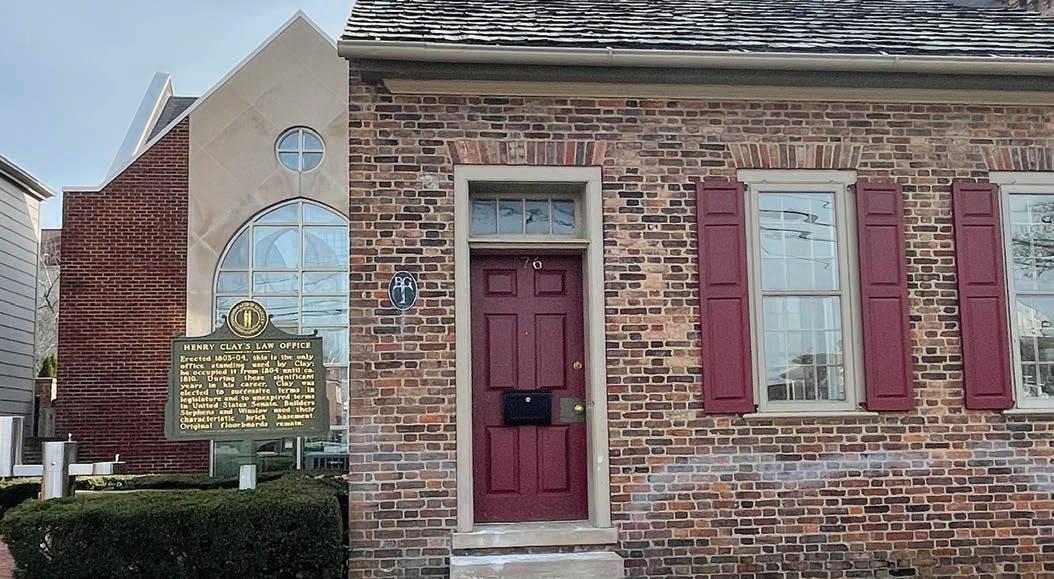

the case in Lexington. A community leader put it this way: “It’s challenging because you’ve been involved in so many meetings and you’ve walked away with hope and nothing’s happened so you become jaded.” Jadedness leads to frustration, even cynicism; people can give in and give up. For some in Lexington, this has already happened.
Maintain “positive” community conversation. Many of those who have joined discussions in Lexington said that there was a premium on keeping conversations “positive,” and that speaking out with concerns or criticisms was often punished. “We don’t fully recognize some points and, even when we do, we don’t always talk about them or reward talking about them,” one resident said, echoing many others. They continued, “If you agree with the mainstream, you’ll get a pat on the back; if not, you’ll hear crickets.” People feel pressure not to “rock the boat.” Some people said the best way to get heard is to channel ideas through people with “more clout, letters after their name, or a more persuasive position,” as one community leader said. Black leaders
observed that their peers have gotten better traction when they put forward White leaders to present their ideas.
Create a new program. One common norm that emerged in conversations with both residents and community leaders was people seeing a problem and then creating a new program, even if one already exists. “We’ll start a whole other nonprofit to do exactly what you’re doing, but add this one little piece,” one community leader said. “Nonprofits have become like churches. It’s like, if I don’t agree with one portion of someone’s religion, I’m going to start my own church.” Another community leader honed in on the deeper issue with this common practice in Lexington: “I don’t think we can program ourselves out of all our problems.” “I
don’t think we can program ourselves out of all our problems.“
Real progress, and real innovation, only come from the knowledge and insights we gain by getting in motion.
Who you know determines where you sit. Lexington is a town based on relationships. Throughout this report, people make the point that getting invited to meetings, receiving funding, and being heard often depends on who you know. Strong relationships are important: they make for strong networks. But they can also make for higher walls, which lead to people being excluded and to some people giving up. In Lexington, this is especially true for those who lack the relationships and support from those in positions of power. A community leader said that when “you’re not invited in, after a while, you just say, ‘It is what it is. I have other things to worry about.’”
WHAT LIES BEHIND IT?
Don’t make waves. Lexington is a community that places a premium on getting along with others, on not raising tough issues, and on not rocking the boat. “I could lose if I speak out,” was how one resident described it. This leads people to fear the repercussions of what they say. Here’s how one resident put it: “A lot of people are afraid of…maybe not retaliation, but what others might think
of them should they speak out about a topic, and how it will affect who they talk to on a daily basis in their friend group, or their church, or whatever. People are just scared of losing friends.” So people hold back on saying what they really feel and what they believe needs to be done. They ask themselves, as one community leader put it, “Do I want to be the difficult one?”
A lack of inclusion. Inclusion can mean many different things: it can mean who is at the table, who is heard, who is part of developing actual solutions, or who is part of taking action. In Lexington, we heard, as the community has grown and changed, it has not always operated inclusively. Many people do not feel that their voices and concerns are heard; many leaders don’t feel they have access to decision-making. A resident said, “Lexington is an old town, and we have a kind-of established order of authority.”
A community leader added, “There’s a feeling that there are some decisions that are already made. So, people look to the future with more reticence.” A grassroots leader said, “Same old people doing the same old things. If you look at any committee makeup in this town—boards,
They feel powerless to create progress because “the system won’t change.”
anything—you can almost name the exact people that will be there.” They continued, “I’m a big fan of rank-and-file voices, the people who actually get their hands on the job. We don’t do that enough here.”
Rigidity in the system. For all of the meetings and studies that take place in Lexington, there is a kind of rigidity in how the community works that has evolved over time. Certain norms have developed for how to engage and how to take action, and many people feel that this fixed path will keep producing predictable results. One community leader said they feel powerless to create progress because “the system won’t change.” Another said, “I care, I’ve pushed, and the system still won’t change.” And still another remarked that there is a strong desire for change among a lot of folks in the community, but that “the system will not bend.”
Emphasizing coordination over true collaboration. Norms for how things get done continue to ensure that groups seek to coordinate their efforts, but coordination is different from actually working together. Lexington’s current ways of working can still leave groups operating in silos—and competing for
the same funding—without necessarily adjusting their goals or approaches. “There’s a lot of duplication in Lexington,” said a community leader. “There are a whole lot of nonprofits that have a project or an initiative that should be an arm of a nonprofit; rather we all end up competing for funding and diluting it all down,” they added. “There are some people that are collaborating,” said another leader, “but at the end of the day they’re all fighting for the same grant money. The way the funding structure is set up really doesn’t foster collaboration as much as it should.”
Hard conversations about duplication and cooperation don’t happen enough. A youth programs expert said, “Our community has a desire to address the issues, but we’re checking off boxes and not necessarily implementing strategies.”

Shared Purpose for the Community
When communities have a shared sense of purpose, explicit messages exist about the community’s aspirations and about everyone heading toward a common goal—or at least trying to work at common goals.
WHAT’S GOING ON?
People fervently believe in Lexington. The people who live and work in Lexington see it as a great place to live. They take great pride in their community. They care deeply about their neighbors. This is the sentiment among longtime residents, among those who left town but later returned, and for those who have moved to Lexington to make the community their home. Even when people decry the many challenges facing the community, they still see Lexington as a friendly community, a place where the “potential is mind-blowing.”
A yearning for a stronger Lexington. You can hear the hope for a stronger Lexington throughout people’s comments. A community leader said everyone “wants to make Lexington a great place for everybody.” A resident underscored this point, saying, “In order for Lexington to flourish as a whole, we have to come together, bring all these communities together, and work together.” But the grassroots leader who said Lexington’s “potential is mind-blowing” also said that “it’s like
Lexington refuses to tap into it.” People want to find ways to tap that potential.
A hope that shared purpose can exist. People are pulling for Lexington to have a sense of shared purpose—a sense that the community is working in a common direction and marshaling their individual and collective resources. Even when different groups focus on different ways of improving education, they are often “talking about the same things,” a local education leader said. “All of those arguments fundamentally are about every youth having the chance to move productively into adulthood and to citizenship.” But achieving a sense of shared purpose requires facing real, often tough, challenges. “Our community has a desire to address the issues. I’m not sure we always look at the root cause,” observed a community leader. And a resident said, “We have common goals but I don’t know that we have a shared understanding of how to get there.” One nonprofit leader called it “a disconnect between there and there.”
WHAT LIES BEHIND IT?
A need for greater integration and a different kind of leadership. All across Lexington, individuals and organizations are working hard on the community’s challenges. But what’s blocking a greater sense of shared purpose is greater integration among these actors, and that will take a different kind of leadership—an
approach that brings groups together to have harder conversations, work more in unison, and focus on shared goals. One community leader said, “I don’t think there’s anyone who has been willing to step to the forefront, to pull it all together. I’m sure there are people who are willing, but maybe they don’t know how. I don’t think there is a shepherd out there moving everyone into the same gate.” Another leader chose a different metaphor when describing the challenge of finding a shared purpose in the community: “Sometimes people are so focused on keeping the train on the track and they don’t develop conductors and people to steer the train.”
“Sometimes people are so focused on keeping the train on the track and they don’t develop conductors and people to steer the train.”
Are we really in it together? Many people we talked with said their fellow residents and leaders are not “seeing the bigger picture” and that what Lexington lacks is “a true community cohesive mentality,” as one leader said. “There’s
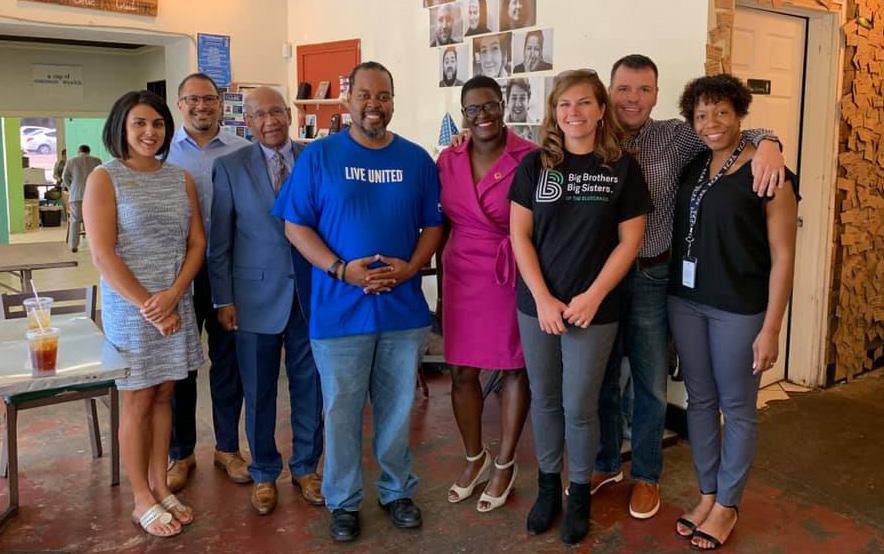

a level of complacency there,” another observed, “and, dare I say, some selfpreservation, because a lot of the time what you have is an attitude of, ‘How is this going to impact my kid and no one else’s?’ So when I ask you, ‘Are you willing to come to the table with me? Are you willing to talk?’ people say, ‘No.’ But it’s bigger than your kid.” Throughout this report, people comment on the divides that persist in Lexington and the need for the community to come together to work on their challenges as shared challenges.
Outdated narrative. Lexington has grown over the years to be a proud, neighborly, on-the-move community with a growing population. It has become a regional hub for commerce, arts and culture, and higher education. It has a history of horses and bourbon. For many
people, this picture shows a town on the move. But many people also believe this picture does not offer a complete and current narrative of Lexington. “People see things through rose-colored glasses a lot. Some take theirs off sooner than others, some don’t ever take theirs off, or they take them off and put on blinders,” observed a community leader. Indeed, in Lexington, some people feel left out and left behind. There are deep disparities in education. There is violence and a shortage of housing. An outdated narrative can allow people not to see or know–even to turn away from–the full picture of what is happening in the community, and this can prevent a new shared purpose from taking hold and guiding their efforts moving forward. As a resident said, “The community doesn’t see things the same way anymore.”
An outdated narrative can allow people not to see or know–even to turn away from–the full picture of what is happening in the community.
Moving Forward, Together
The
community
needs
a greater sense of shared
purpose moving forward—a belief that each person can fulfill their potential and no one gets left behind.
This report is about how the people of Lexington can come together to ensure that all young people and families have equal access to the education and resources they need to reach their goals in school, after graduation, at work, and as full contributors to society.
In the introduction, we suggested that according to The Harwood Institute framework, Community Rhythms: The Five Stages of Community Life, Lexington is in the Growth Stage, where there is an abundance of programs, initiatives, leadership, and talent. But within this stage, the community finds itself in a “waiting place,” where progress stalls even amid lots of programs and activities.
To get past waiting, communities often simply push harder, launching more projects, raising more funds, and announcing new programs. But toward what end are such new efforts? Where is the community heading?
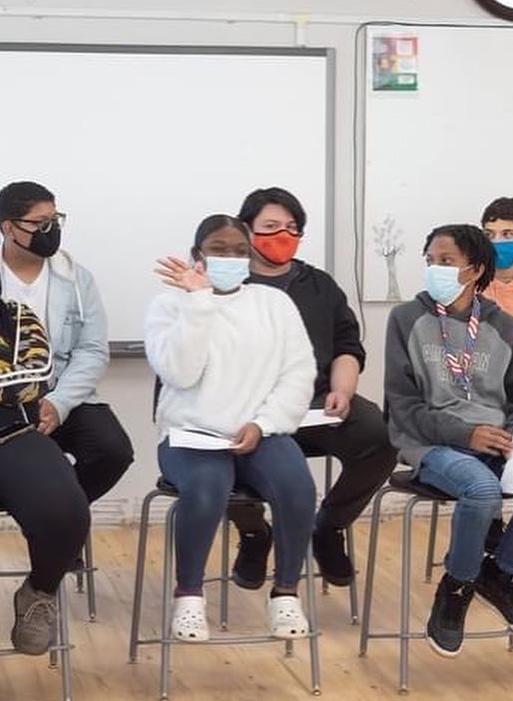
The voices of Lexington’s residents and leaders are clear: The community needs a greater sense of shared purpose moving forward—a belief that each person can fulfill their potential and no one gets left behind.
There is no single program, no individual leader, and no one organization that can deliver this opportunity and create the change the people of Lexington are calling for. The task ahead is discovering how to marshal Lexington’s many resources for the greater good.
Here is a series of steps that can guide the community in moving forward, steps that are rooted in shared purpose and common action.
Embrace more authentic engagement.
Lexington has made down payments on engaging residents, but much more needs to be done. Too many people still feel they lack opportunities for their voices to be heard; they feel shut out from the opportunities that do exist; too often community engagement yields little or no action. More “courageous” conversations about the really tough issues still need to happen. For Lexington to move out of its waiting place—and create a new shared purpose—it will need to adopt practices that support the authentic engagement of all residents.
Focus on collaboration, not simply coordination.
Lexington regularly demonstrates that it can coordinate programs and activities. However, what is needed now—what is necessary to marshal the community’s collective resources—is more collaboration. This requires groups to have harder conversations about the purpose of their actions, about how different programs and initiatives fit together (or don’t), and about what it actually takes to integrate their efforts so they become mutually reinforcing. In every community, coordination can too easily become an activity without the discipline of common purpose. Real collaboration is action, driven by shared intention.
Develop more boundary spanning entities and leaders.
There is no lack of space for leaders in Lexington to talk and work together. At the same time, this report clearly indicates that these spaces often bring the same people together, or fail to engage people across sectors
Coordination can too easily become an activity without the discipline of common purpose. Real collaboration is action, driven by shared intention.
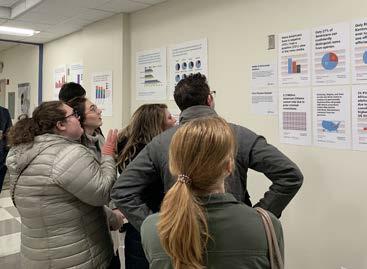

and communities. Lexington needs more entities that focus on building connections across dividing lines. This requires entities that make spanning boundaries central to their mission. It calls for leaders with the mindset and the skills to work across boundaries. These kinds of institutions and leaders need to be actively developed in Lexington.
Make more room for new and emerging leaders.
Lexington is blessed with new and emerging leaders throughout the community. But in many communities that are growing fast and that have deep traditions, it can be difficult to make room for such new leaders. This is the case in Lexington. But let’s be clear: making room is not simply about adding a chair at the table. Rather, it is about making room for people’s voices and perspectives—however different they may sound and no matter how difficult the issues are that they raise. Making room is about a willingness
to consider—and even move in—new directions. It is an understanding that frustrations with the past can be sources of energy for a more productive future.
At the heart of Lexington’s challenges is the need for a greater sense of shared purpose.
Develop more organizations, leaders, and residents who are turned outward.
Lexington does not lack pride or programs. But too many people do not see or hear one another. Too many agencies that run programs are focused on their own strategies at the expense of seeing the whole community. These challenges lead
to divisions between people and to insulation and isolation between community programs. The remedy for these challenges is to embrace a mindset—a posture—of being turned outward to the community. It is only when people are turned outward that it is possible to keep one another and the community as a whole in sight.
Forge new norms and a sense of shared purpose.
At the heart of Lexington’s challenges is the need for a greater sense of shared purpose. The shift to shared purpose occurs when people discover the aspirations they have in common, work through their challenges, and are clear on their purpose in action— together. Shared purpose is built upon productive norms for interaction: making room for everyone to engage, listening deeply, being willing to hear different perspectives, making commitments to one another and following through, and working for the common good. Lexington needs stronger norms and shared purpose to move ahead.
Renew Lexington’s shared narrative. Lexington has changed dramatically in recent decades. The community’s shared narrative, however, has not kept pace with these changes. There have been changes in growth and diversity and changes in the challenges facing the community. When a community’s shared narrative more accurately reflects the wholeness of a community, more people can see and hear themselves in it. Then, they feel part of something larger than themselves, and they want to work to strengthen or improve the community. Lexington needs a narrative that reflects that fuller picture of people’s realities. But beware: narratives do not change because someone hires a public relations firm to “impose” a new reality on people. New narratives only take hold when concrete actions demonstrate the possibilities of a new path.
Lexington’s Path to Shared Purpose is about the community ensuring that all young people and families can achieve success in their lives. It is about how Lexington can move forward with everyone.



